| 17 April 2008 |
The NST secondary mirror is mounted on its hexapod in the
coudé room for testing. We are testing the wavefront
sensor system which will adjust the secondary position
during observations. The hexapod will handle telescope
focus as well as alignment. |
|
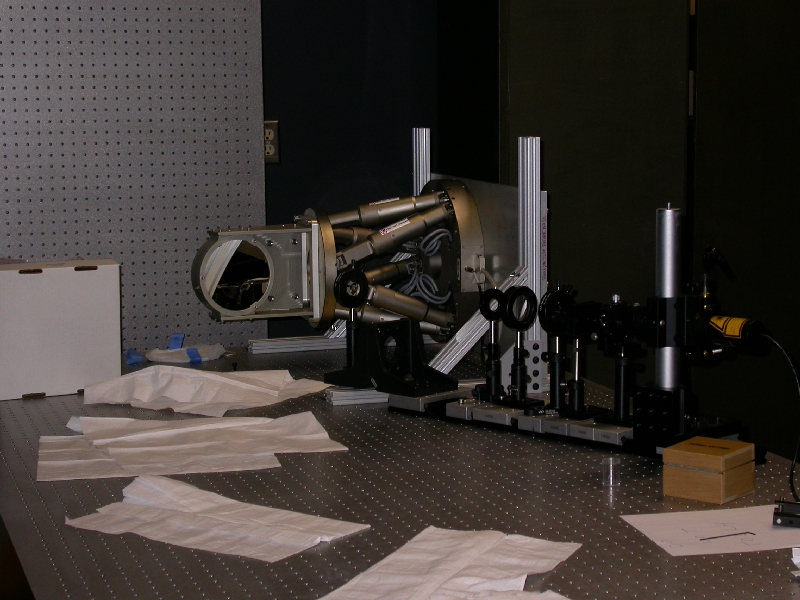 |
| 6 May 2008 |
The new storage building is under construction next
to the Mudd Cottage. This building will be used to
store mirror handling and other equipment for NST.
|
|
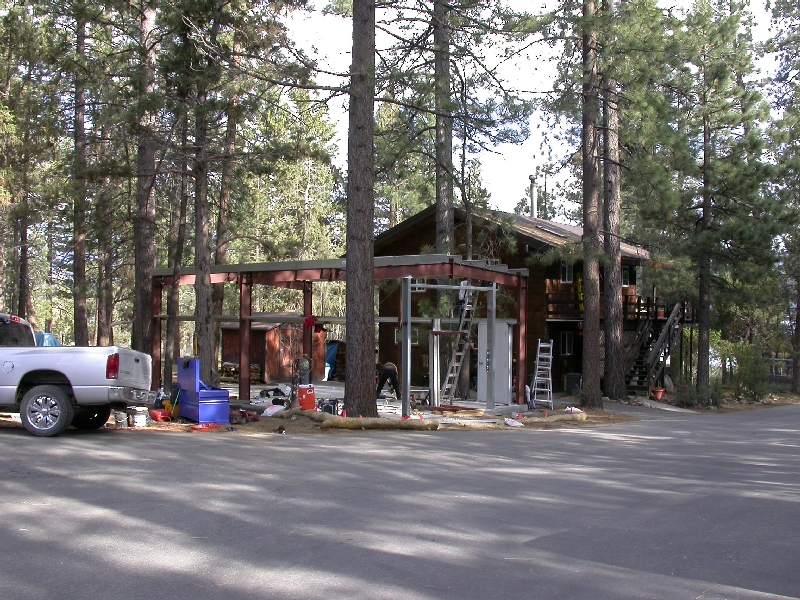 |
| 12 May 2008 |
The completed NST storage building.
|
|
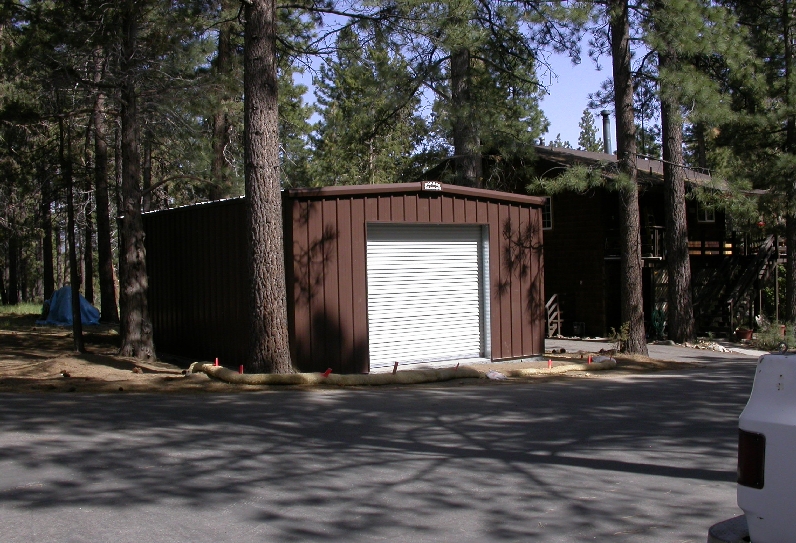 |
| 26 September 2008 |
Major NST parts packed on truck leaving DFM for BBSO.
|
|
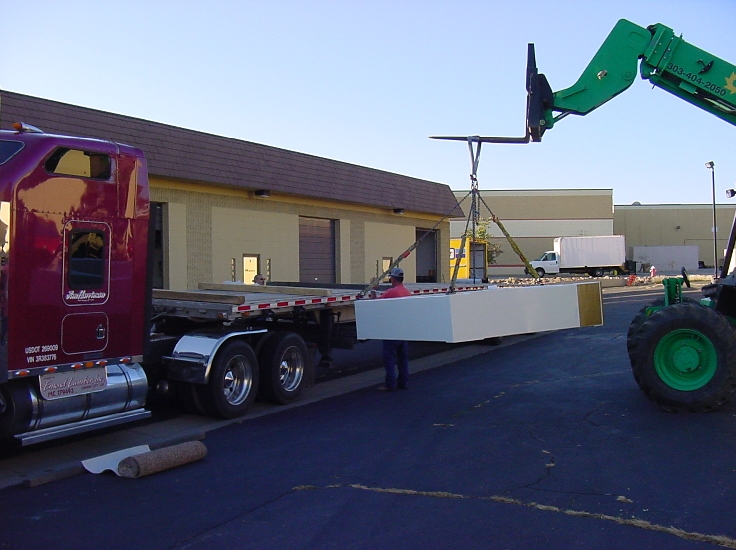 |
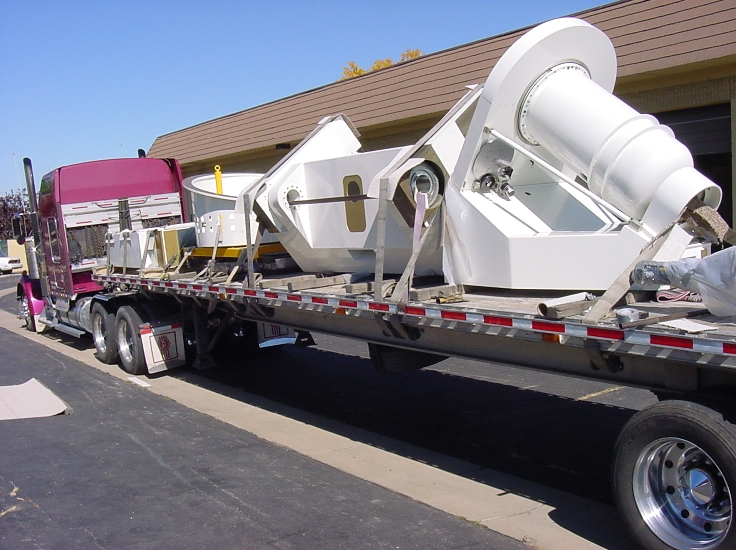 |
| 29 September 2008 |
The NST arrives at BBSO. The parts are placed on the
causeway, waiting for the crane.
|
|
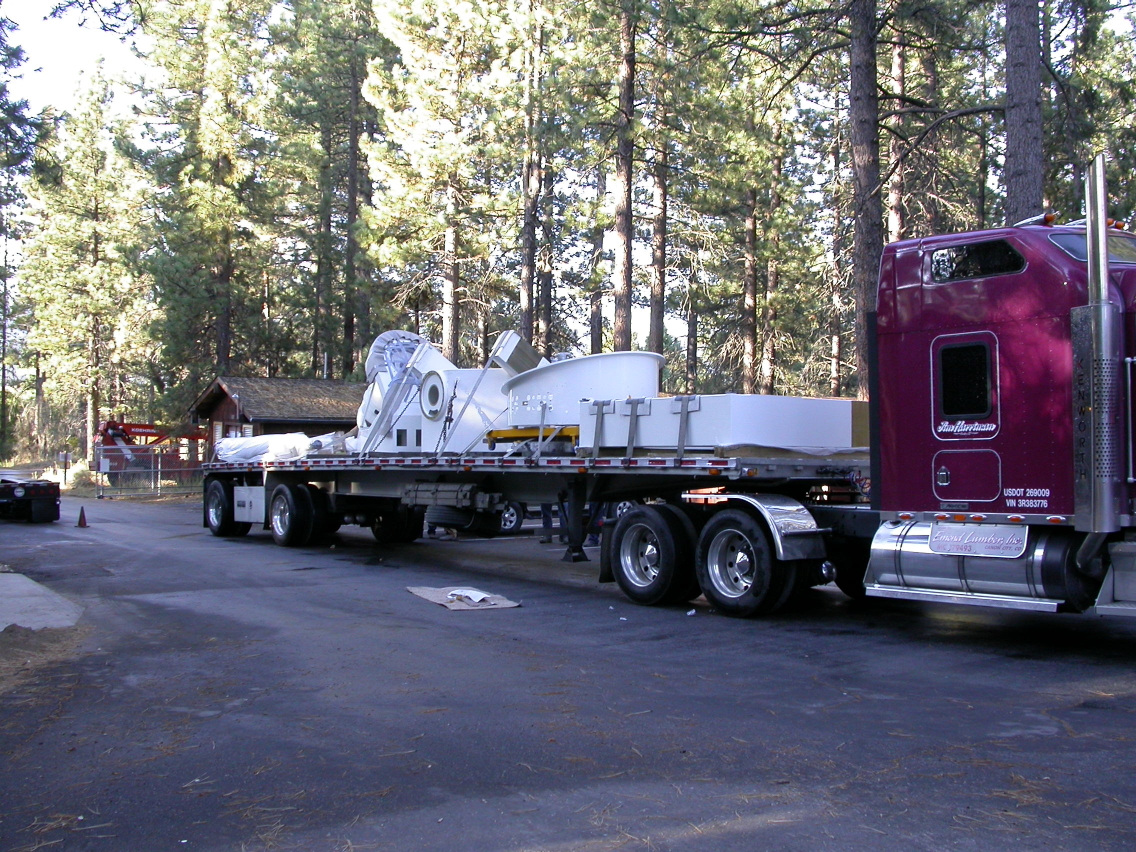 |
 |
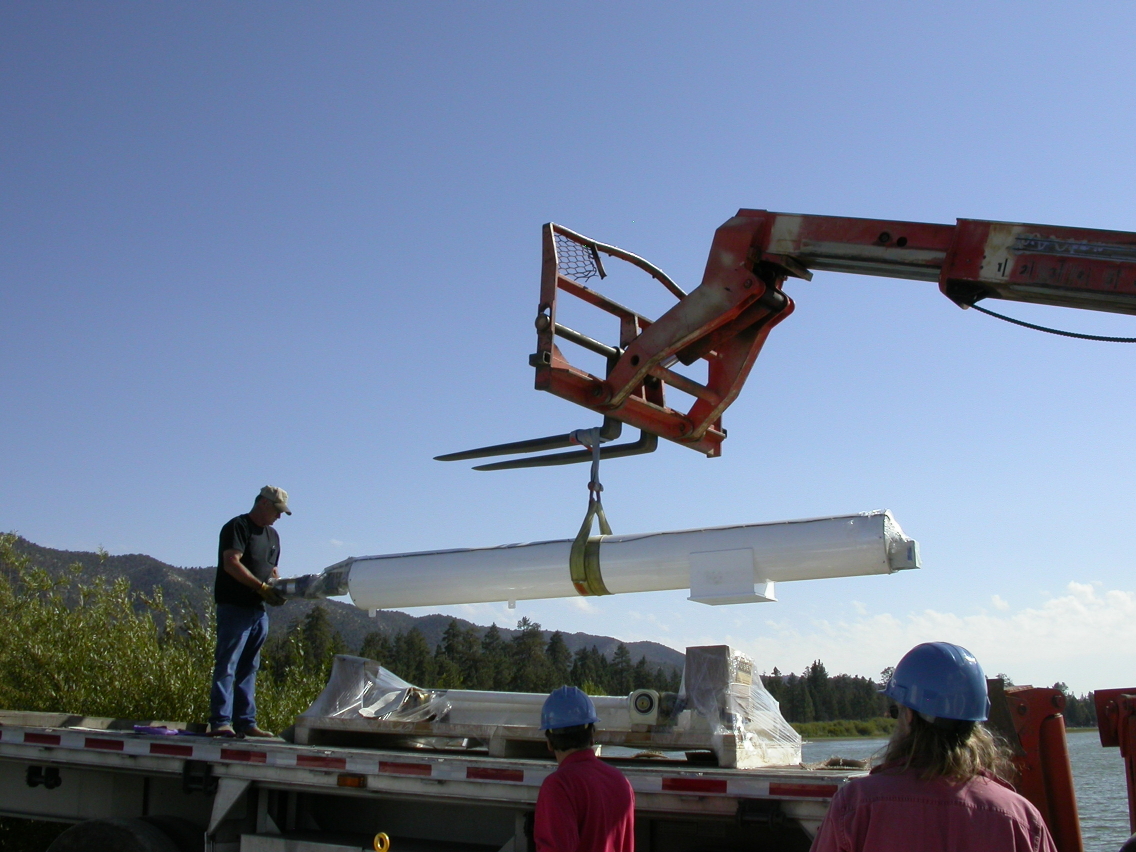 |
|
The soleplate is installed on the pier. The crane
arrives late in the day.
|
|
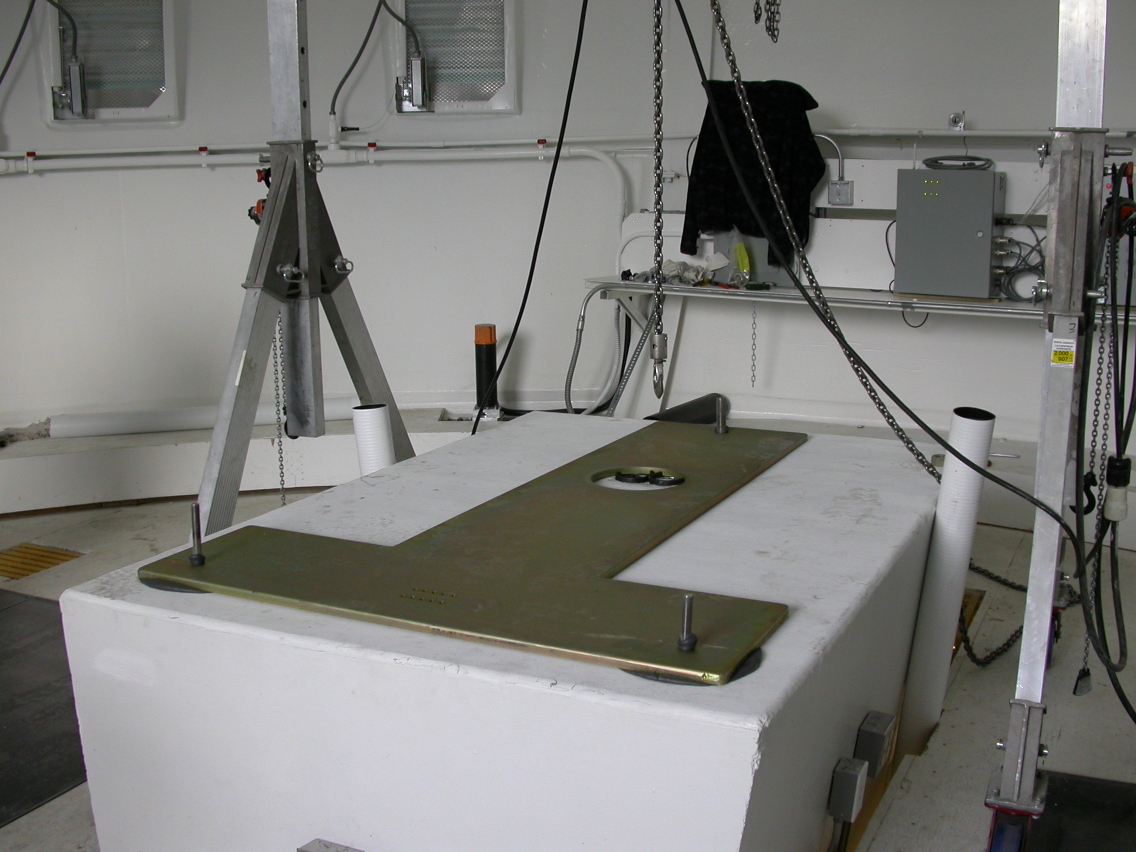 |
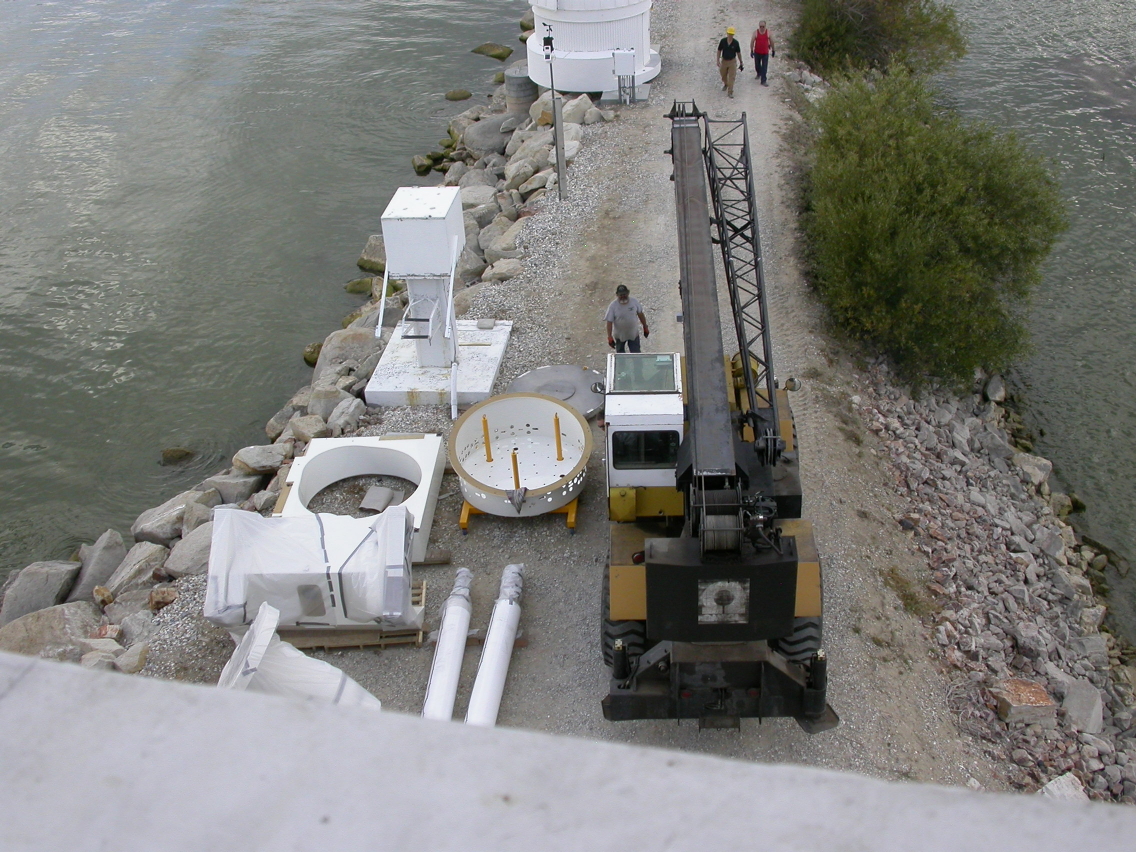 |
| 30 September 2008 |
Most of the large parts of the telescope were installed
today.
|
|
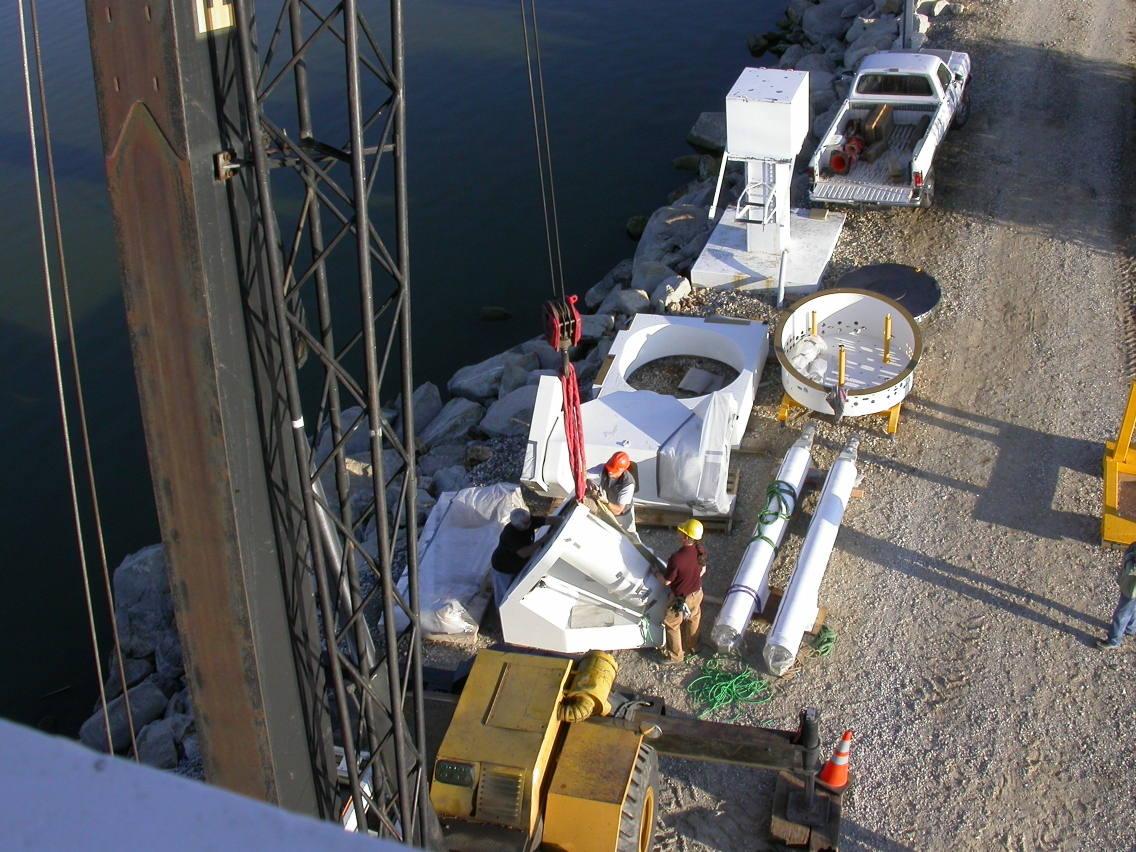 |
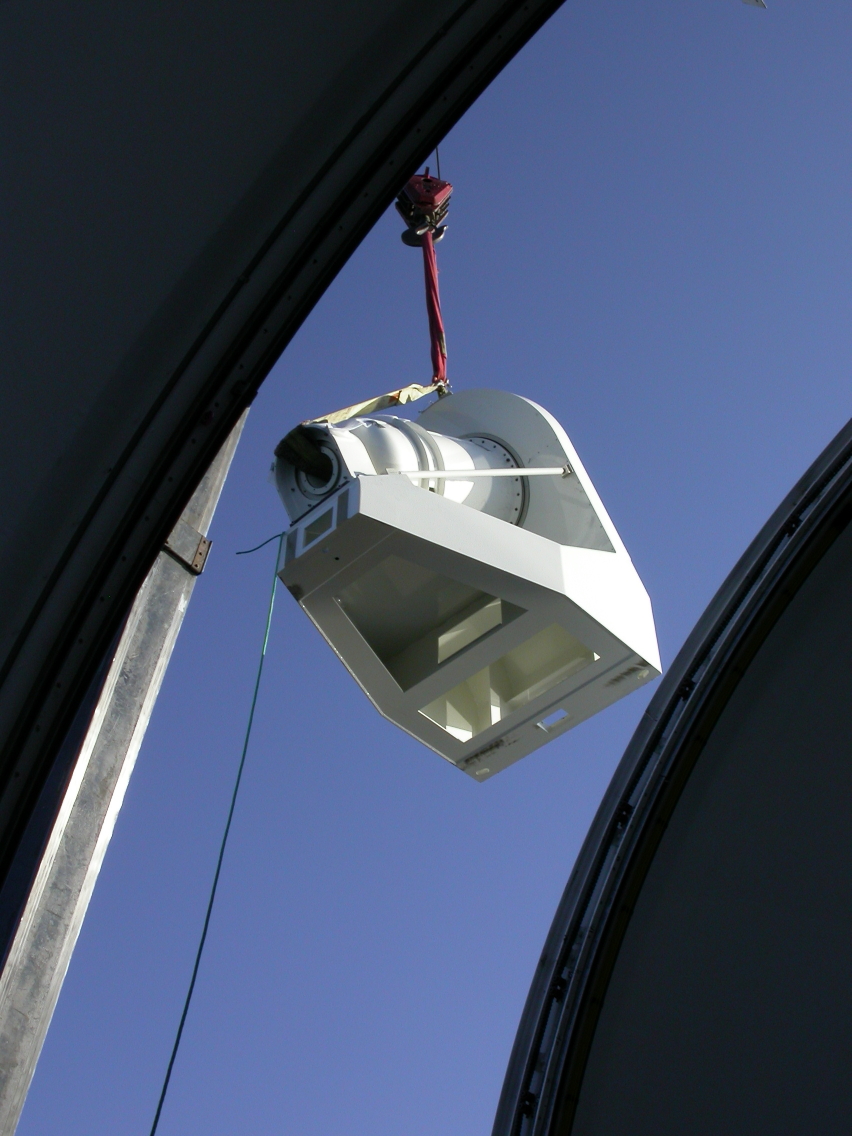 |
|
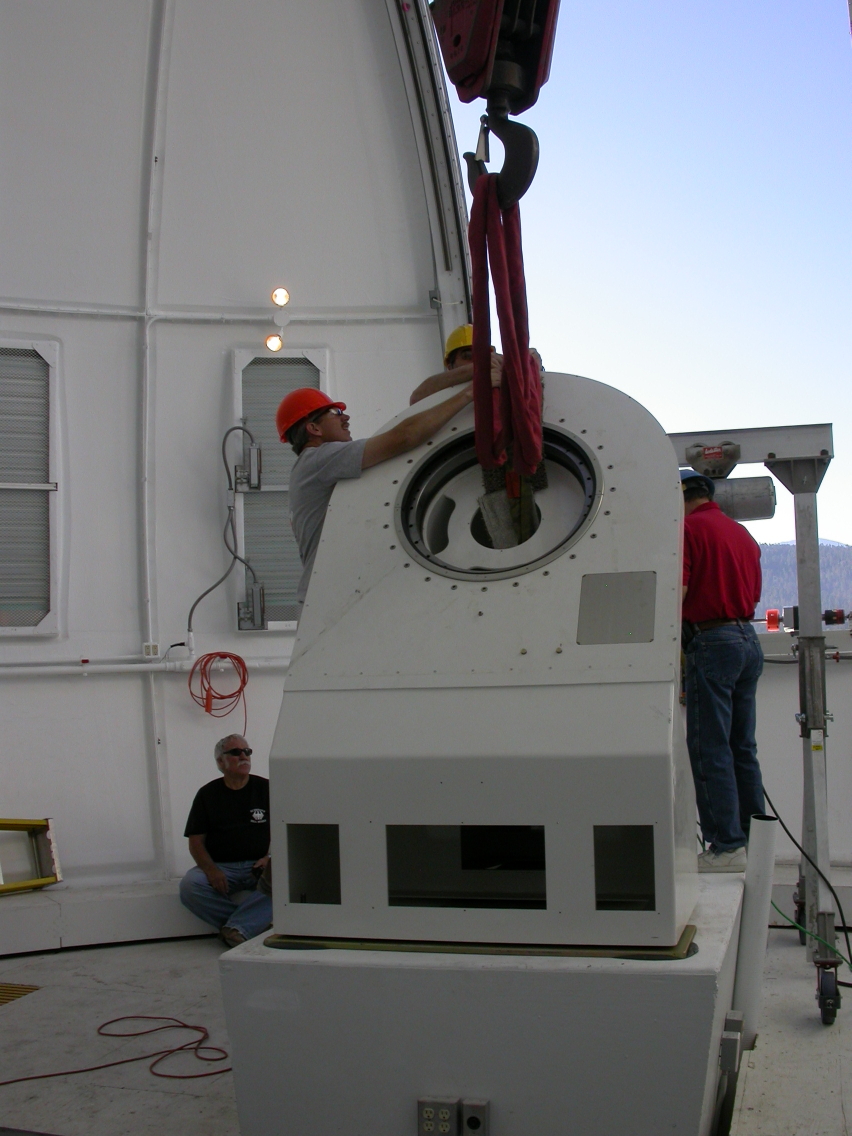 |
 |
|
 |
 |
|
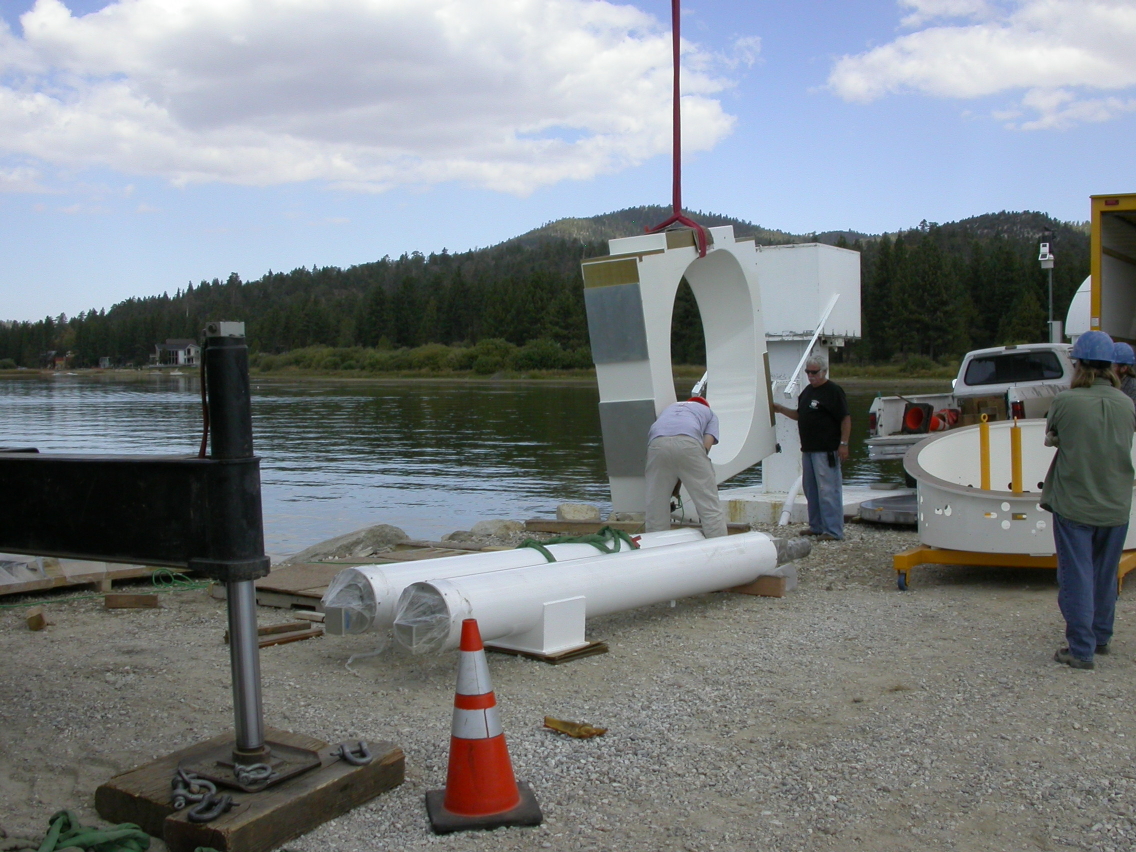 |
 |
|
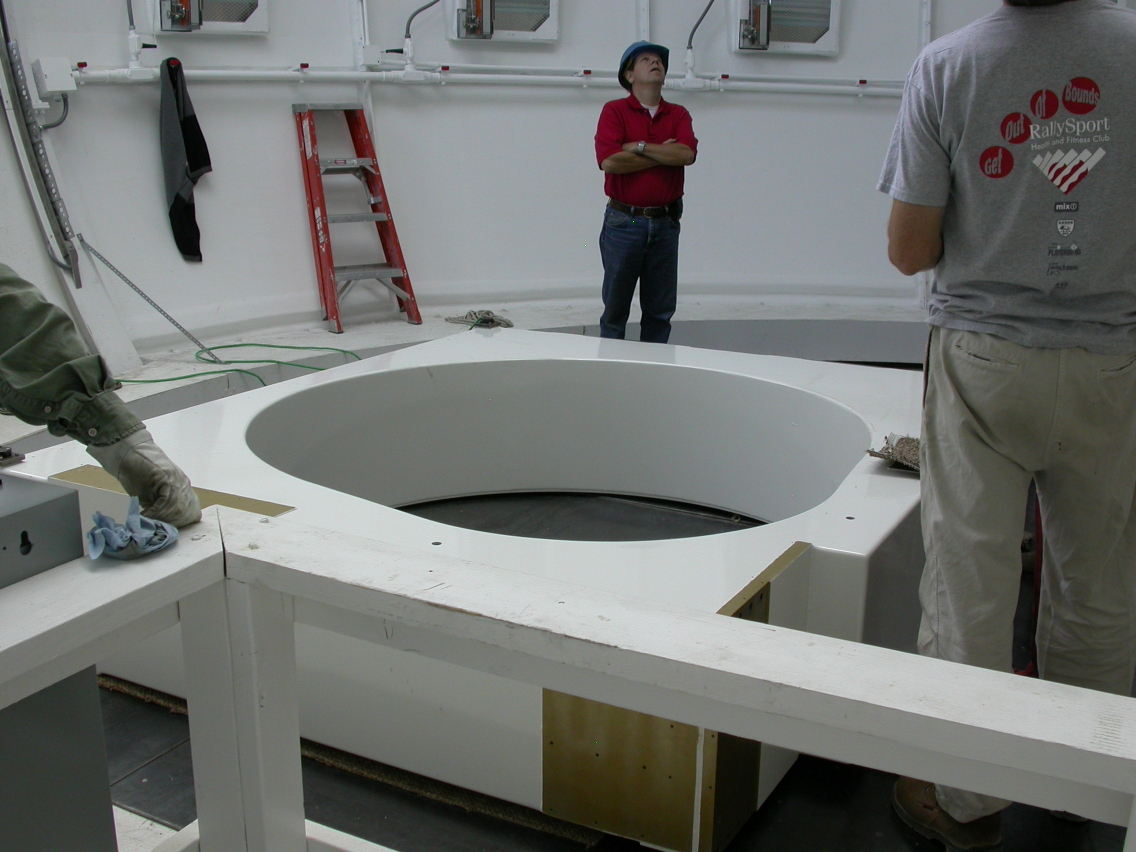 |
|
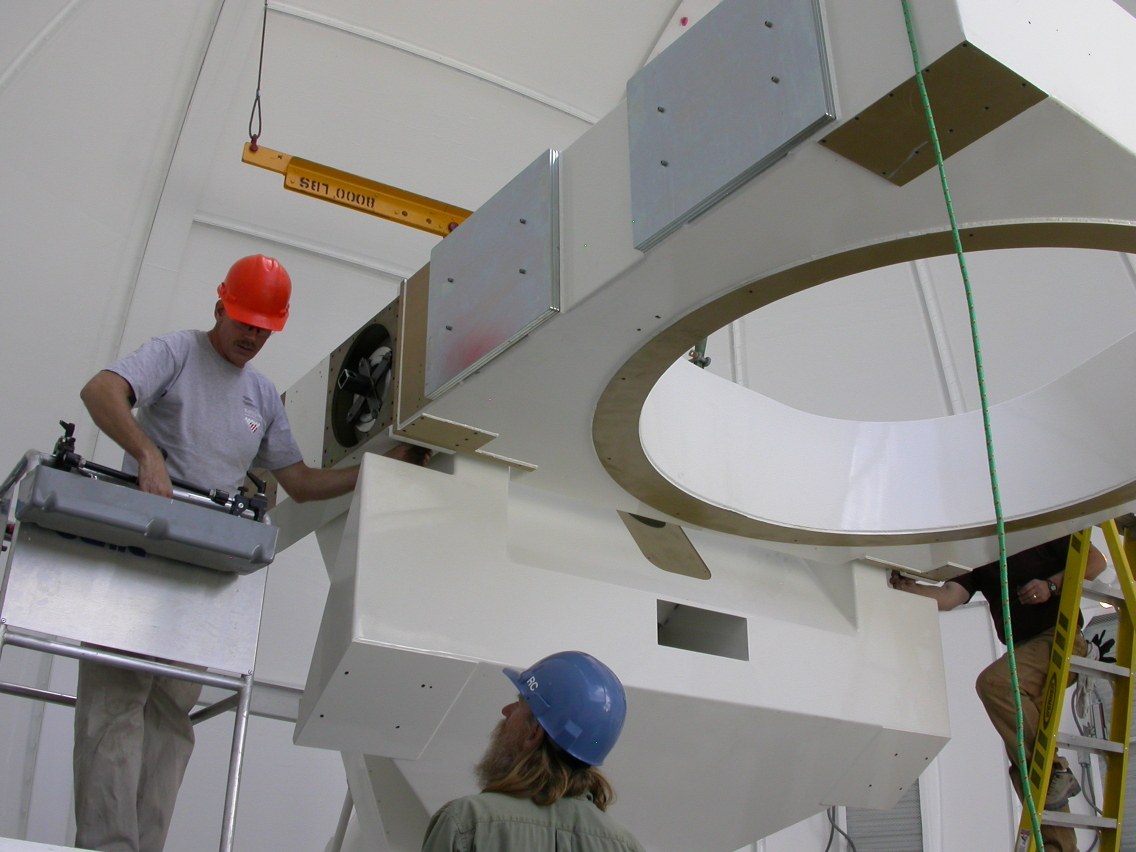 |
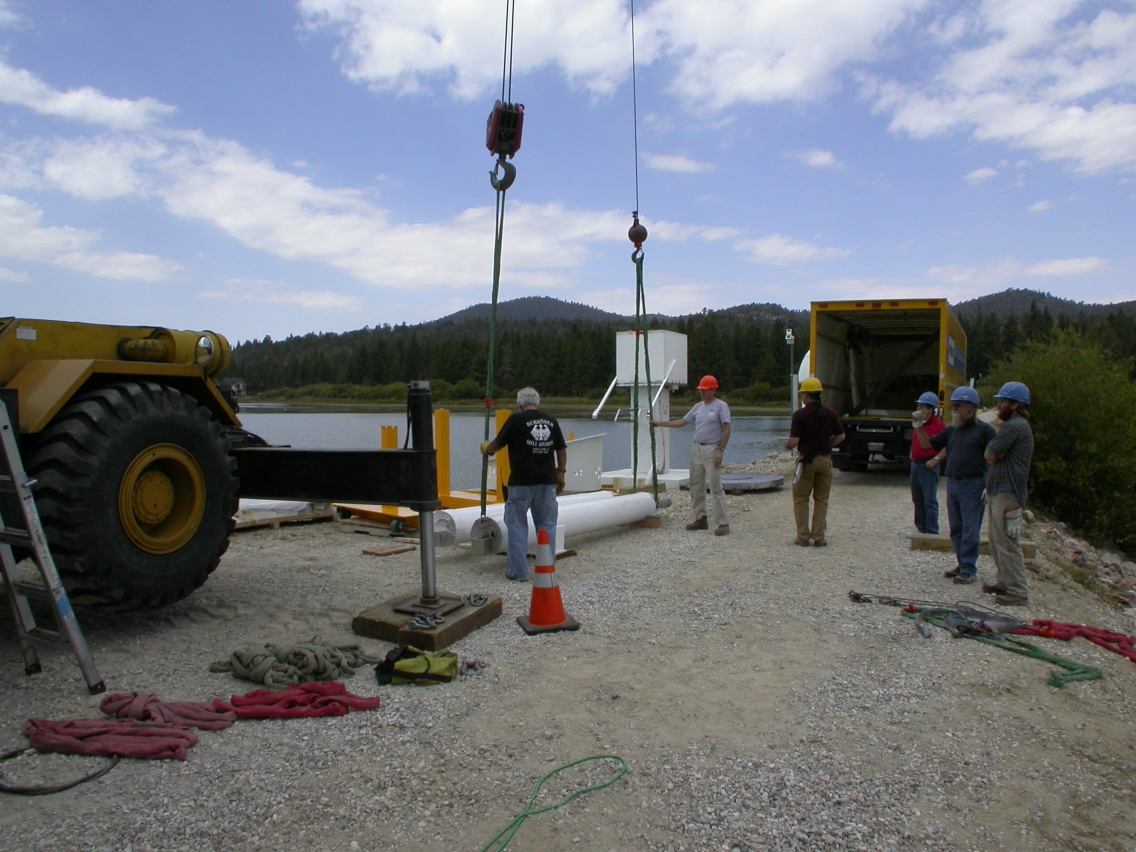 |
|
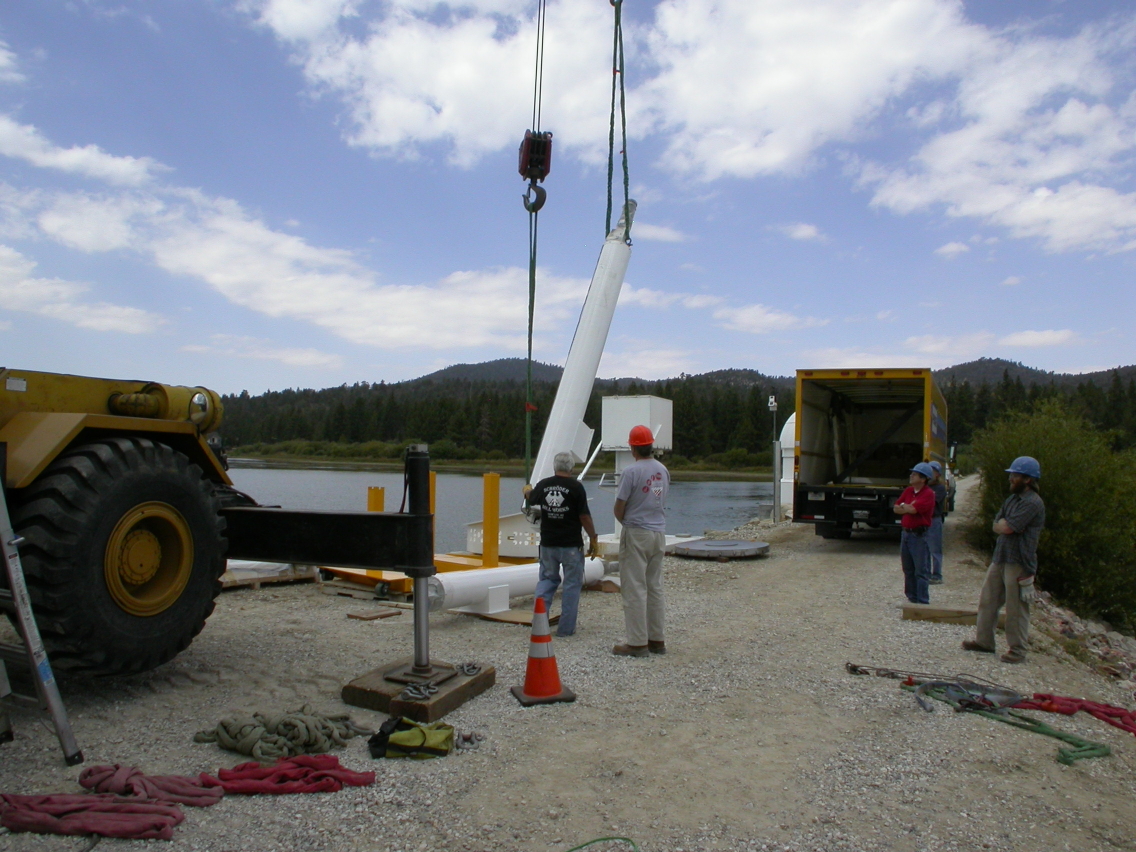 |
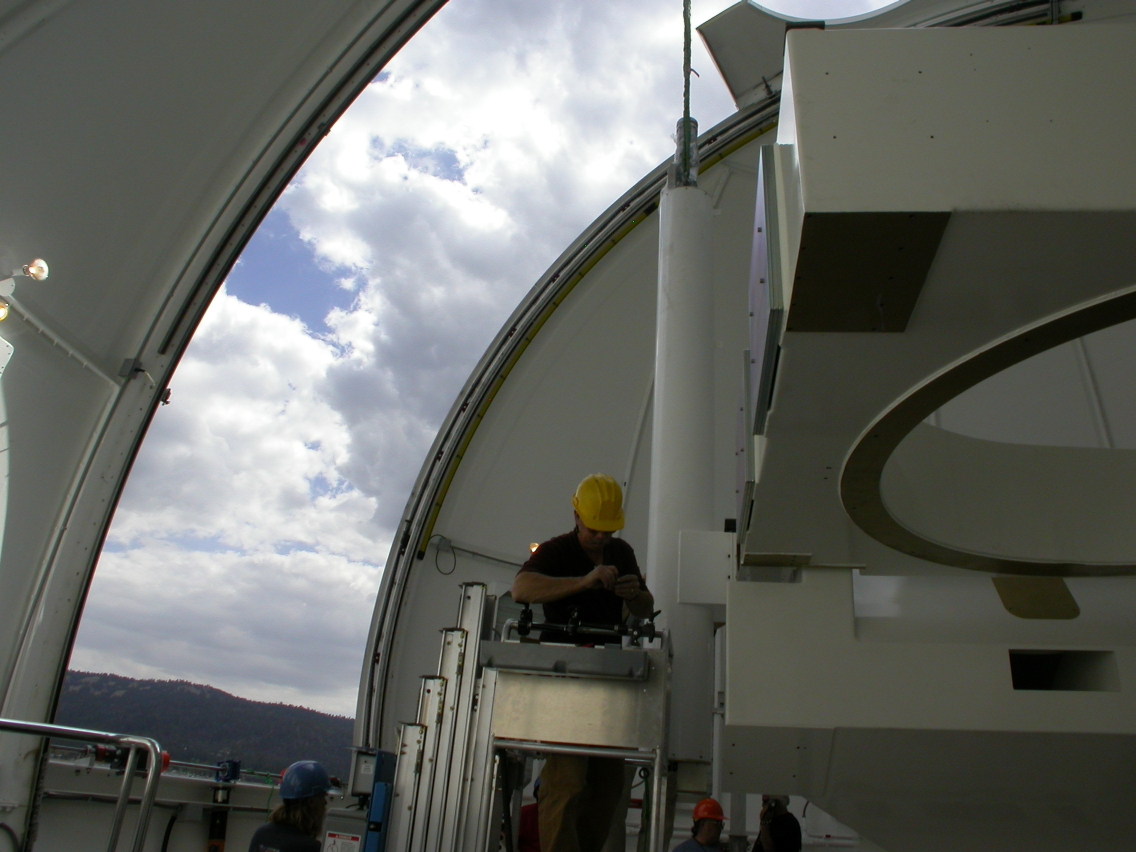 |
|
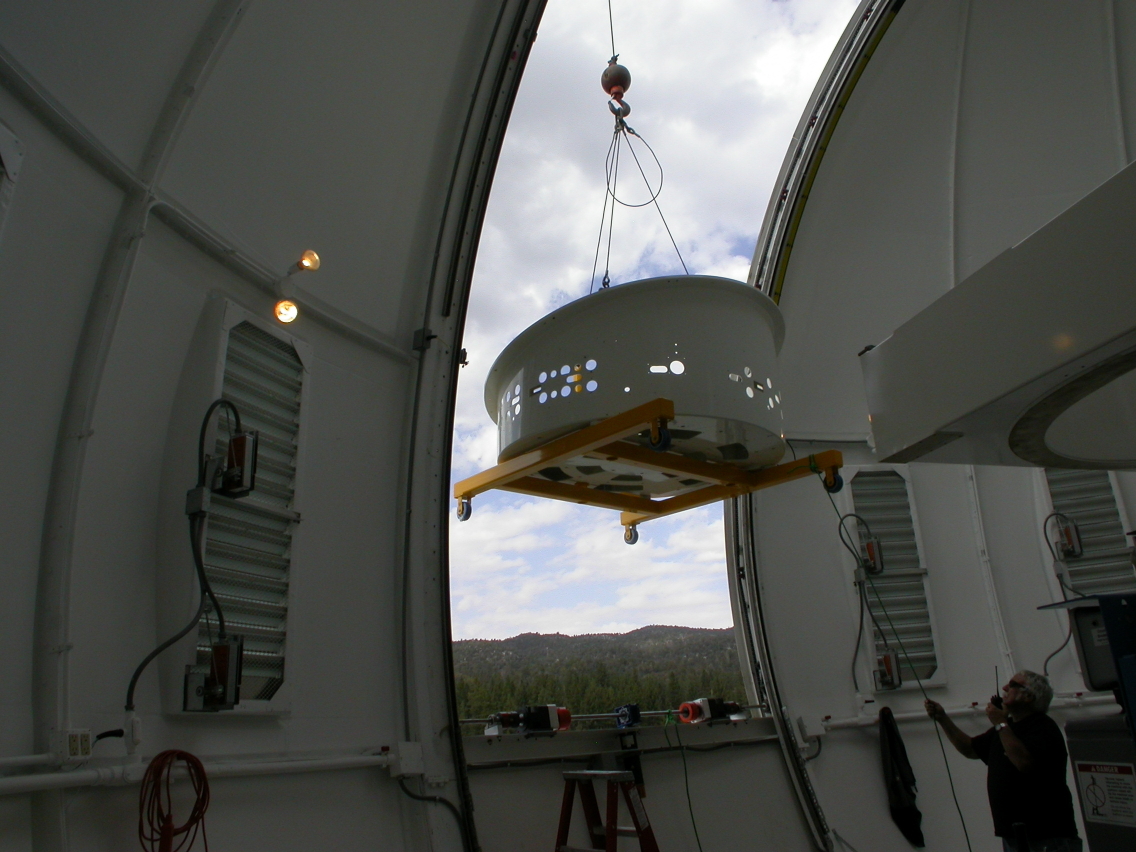 |
 |
| 01 October 2008 |
The secondary tower was installed today. All the
crane work was completed, except for installing the
primary mirror. This will not happen for some time yet.
|
|
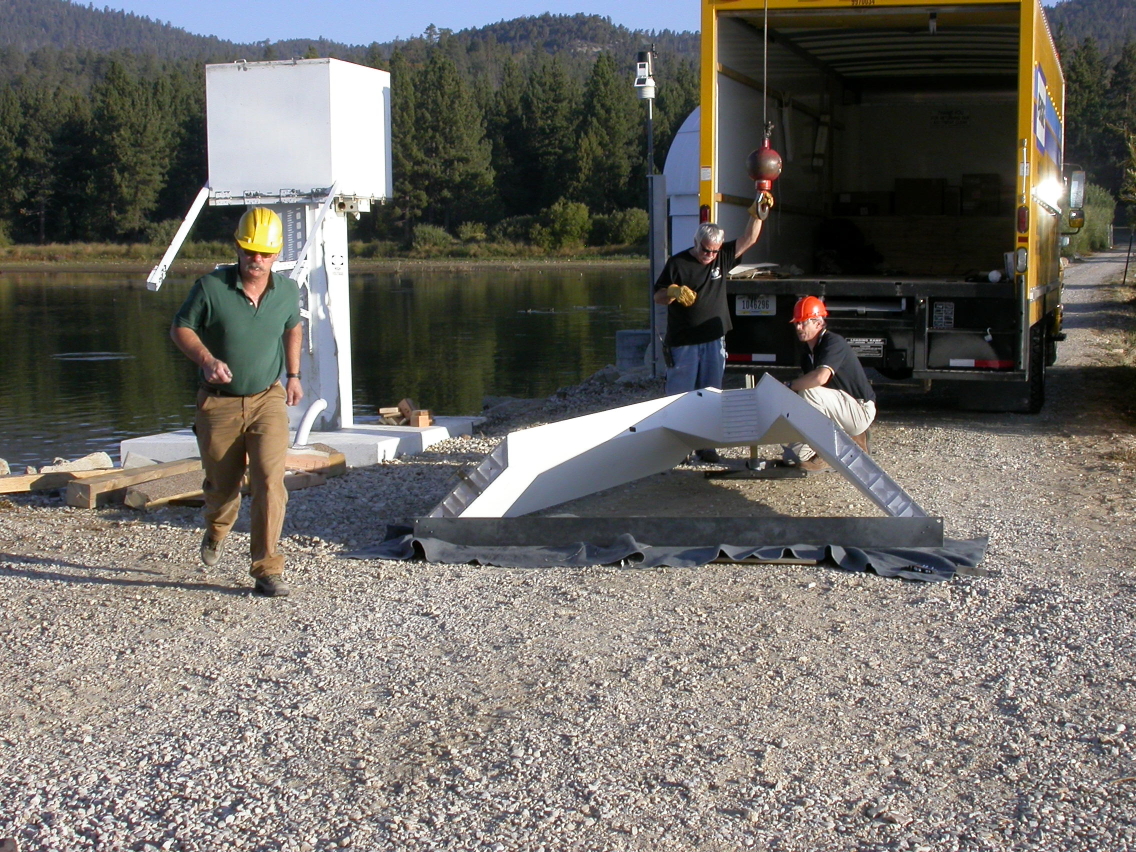 |
 |
|
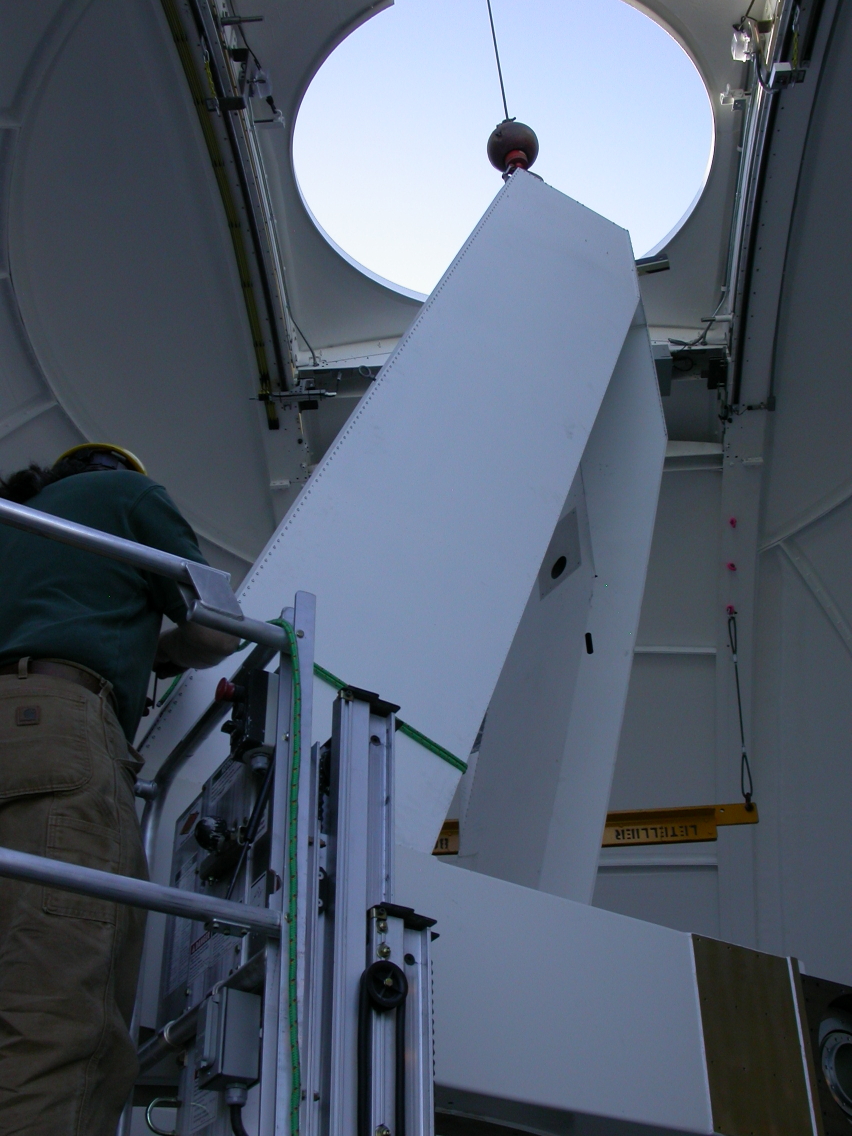 |
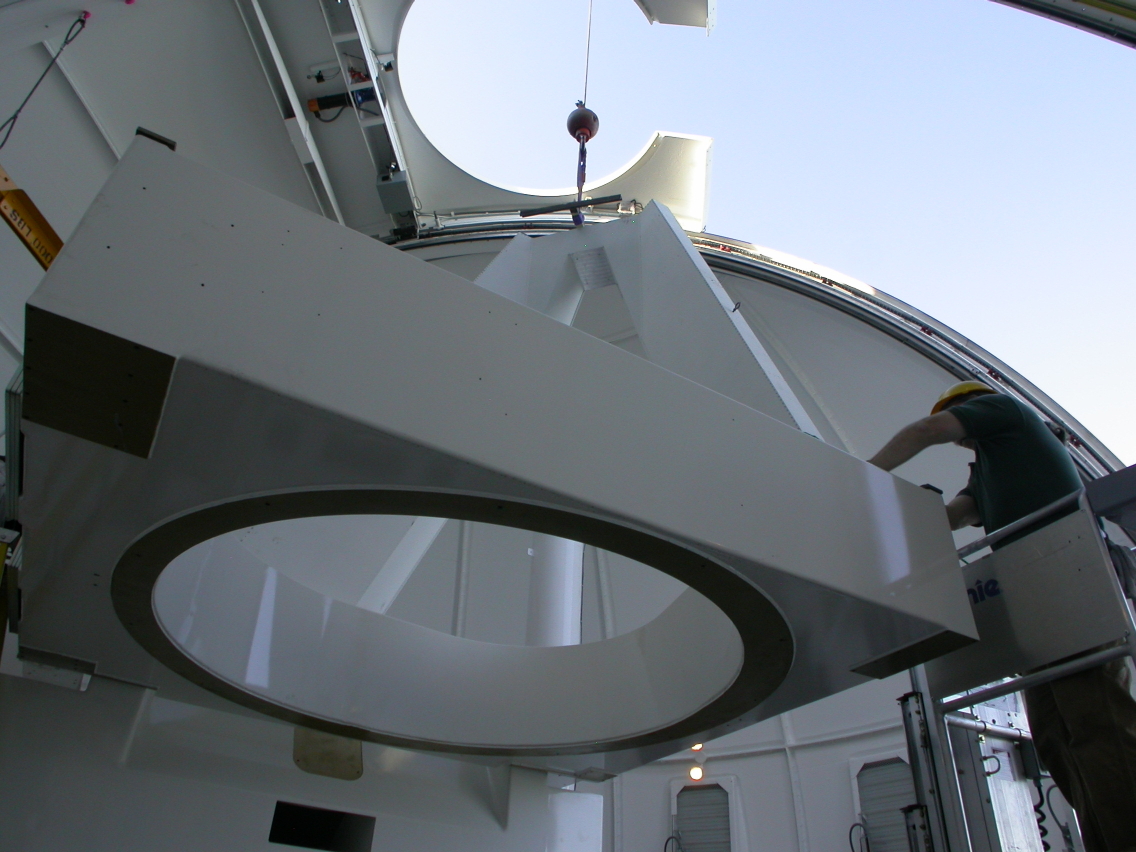 |
|
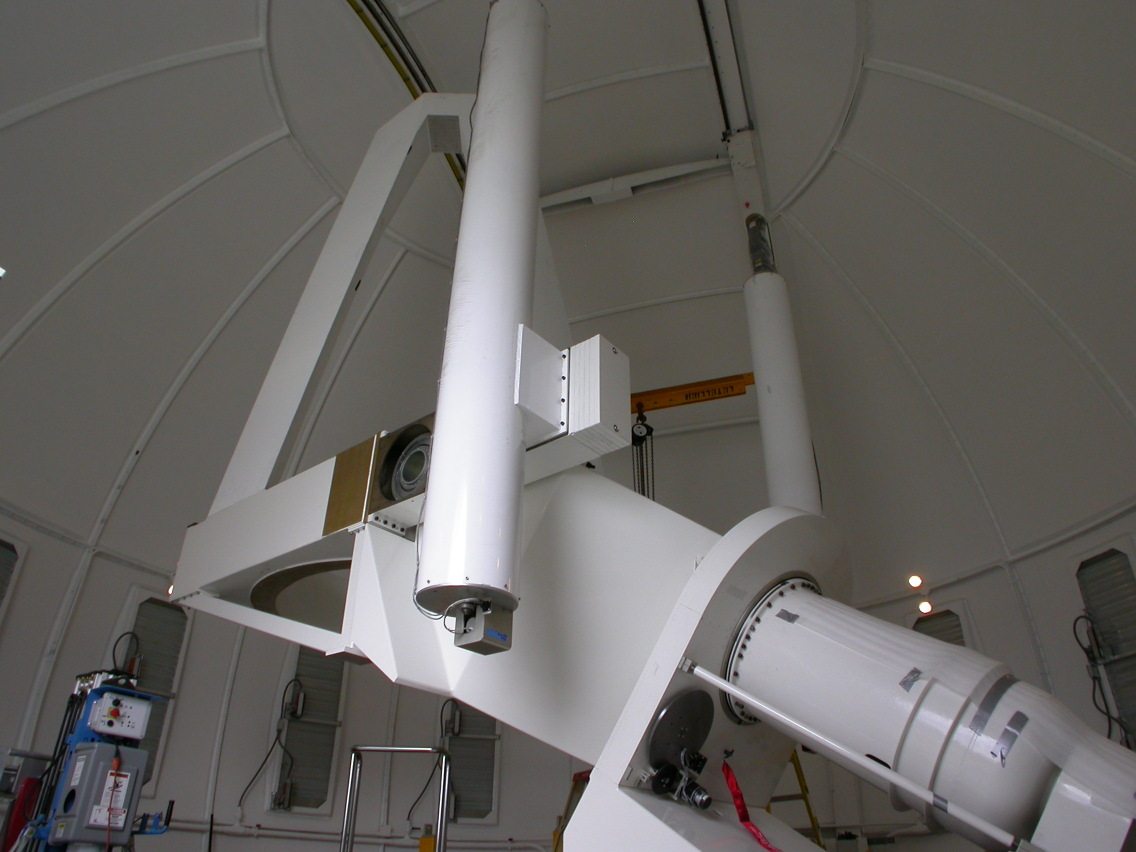 |
| 06 October 2008 |
Today the DFM crew were ready to begin assembly of the
mirror cell. The first step is to install the levered
counterweights which support the mirror as the telescope
moves to follow the Sun. NST uses a combination of
these passive weights as well as active computer
controlled acutators to control the shape of the
primary mirror. A set of Teflon pads is installed to
initially support the mirror as it is installed in the cell.
|
|
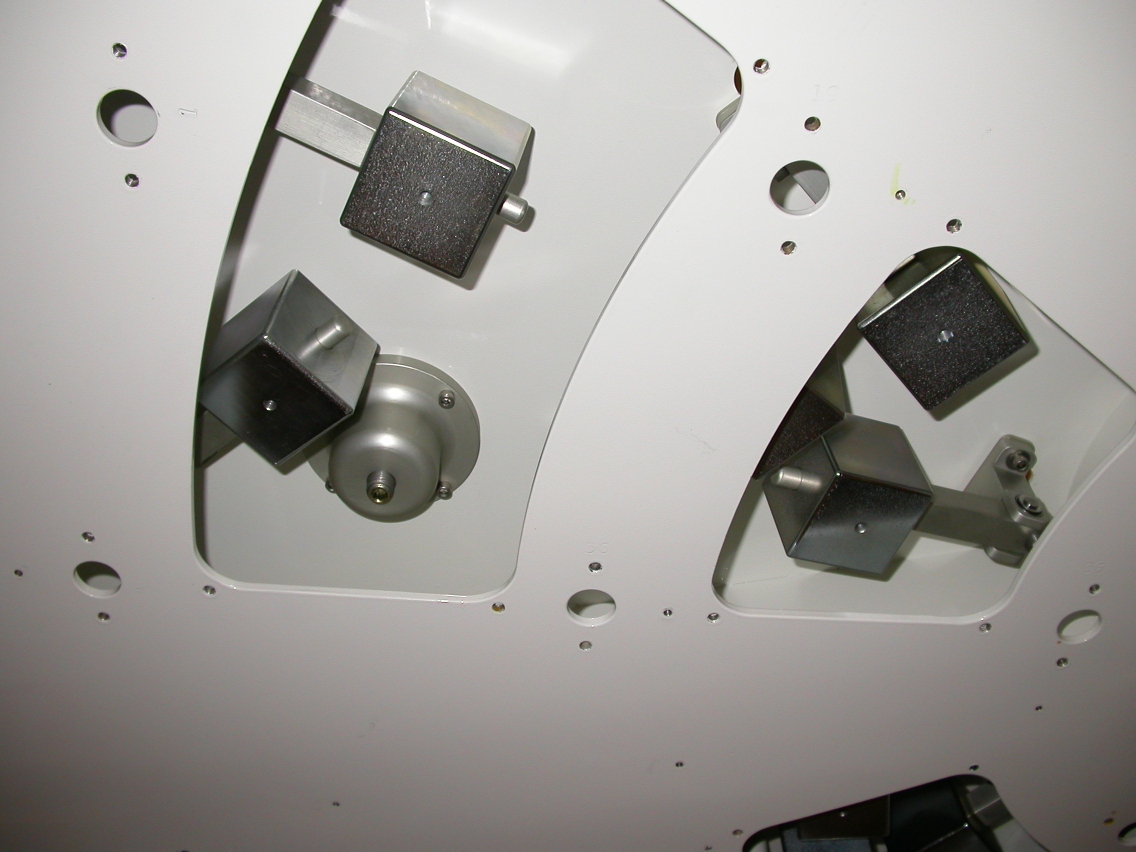 |
 |
| 08 October 2008 |
The dummy mirror is hoisted up and will end up
on the black pads on top of the yellow posts. |
|
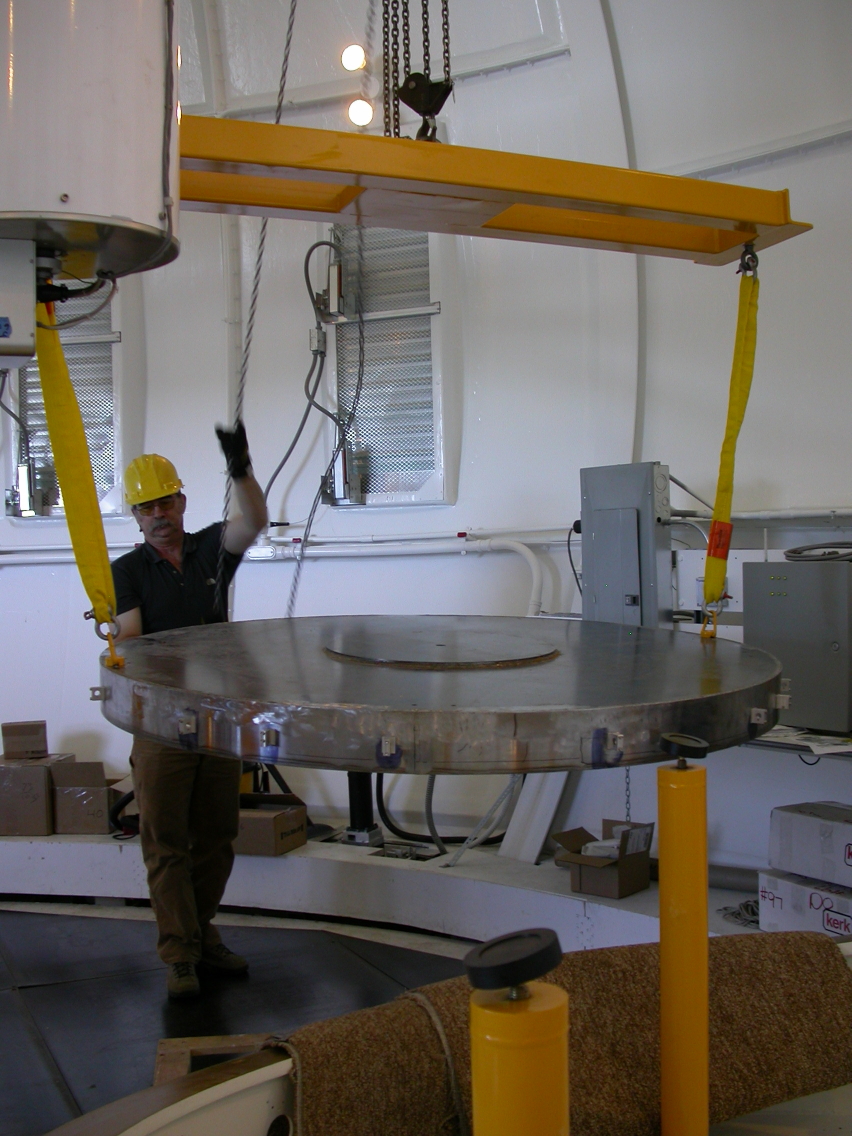 |
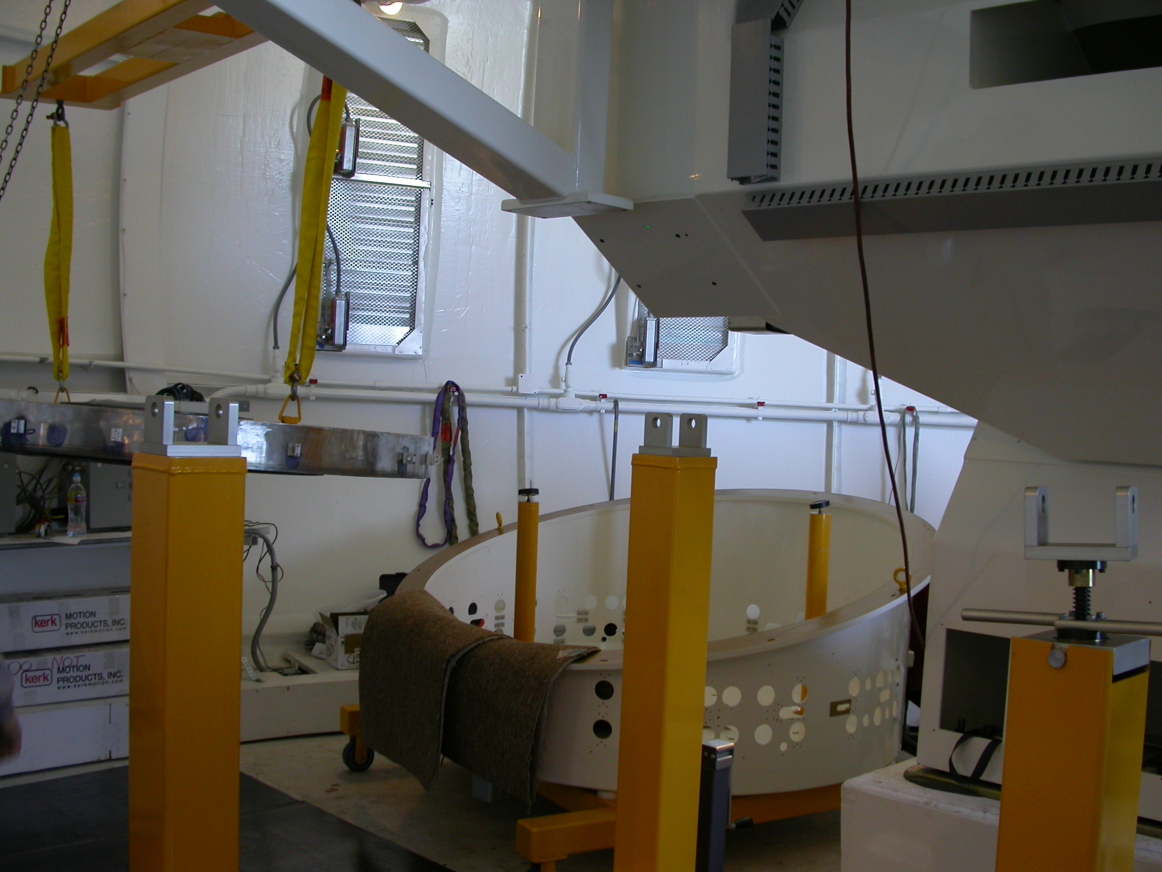 |
|
Before the dummy mirror is set down on the
yellow posts the actuator rods are attached to
the back. On the real mirror the rods will
be attached to the "pucks" glued to the back
of the glass.
At the same time work has started on the primary
mirror cover. |
|
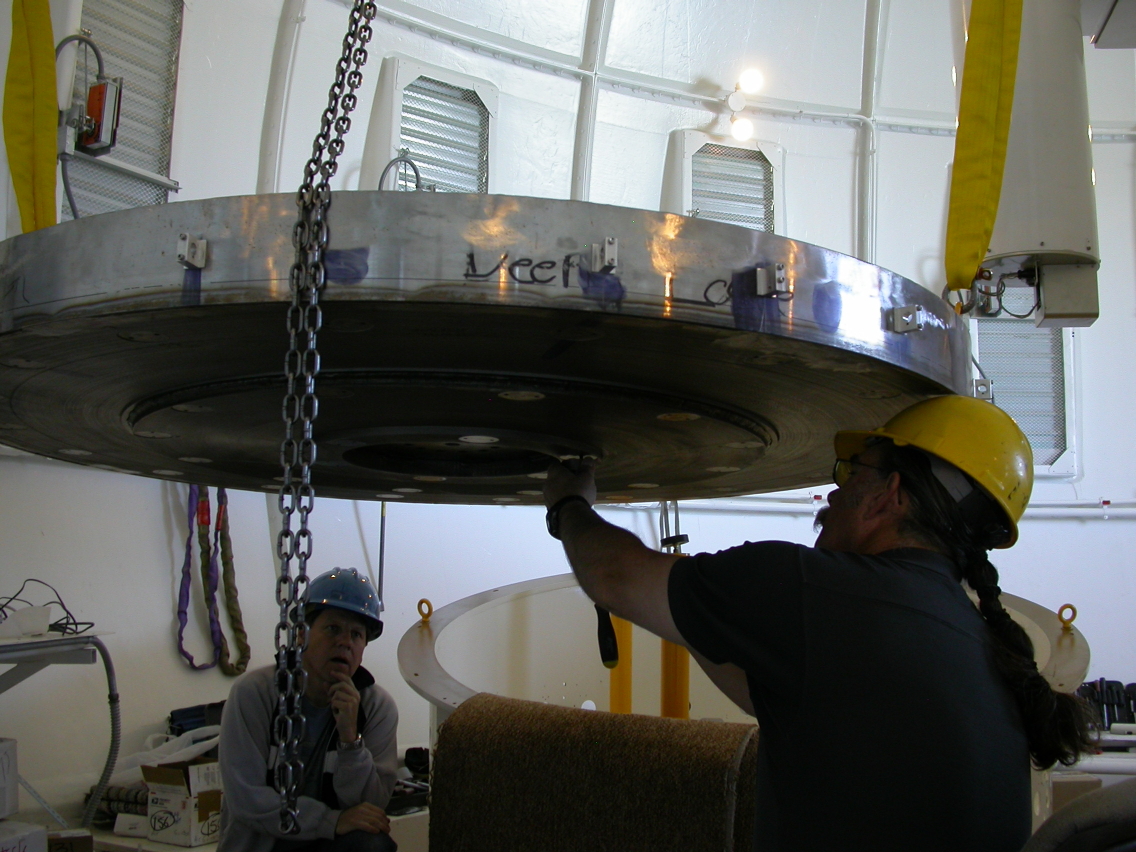 |
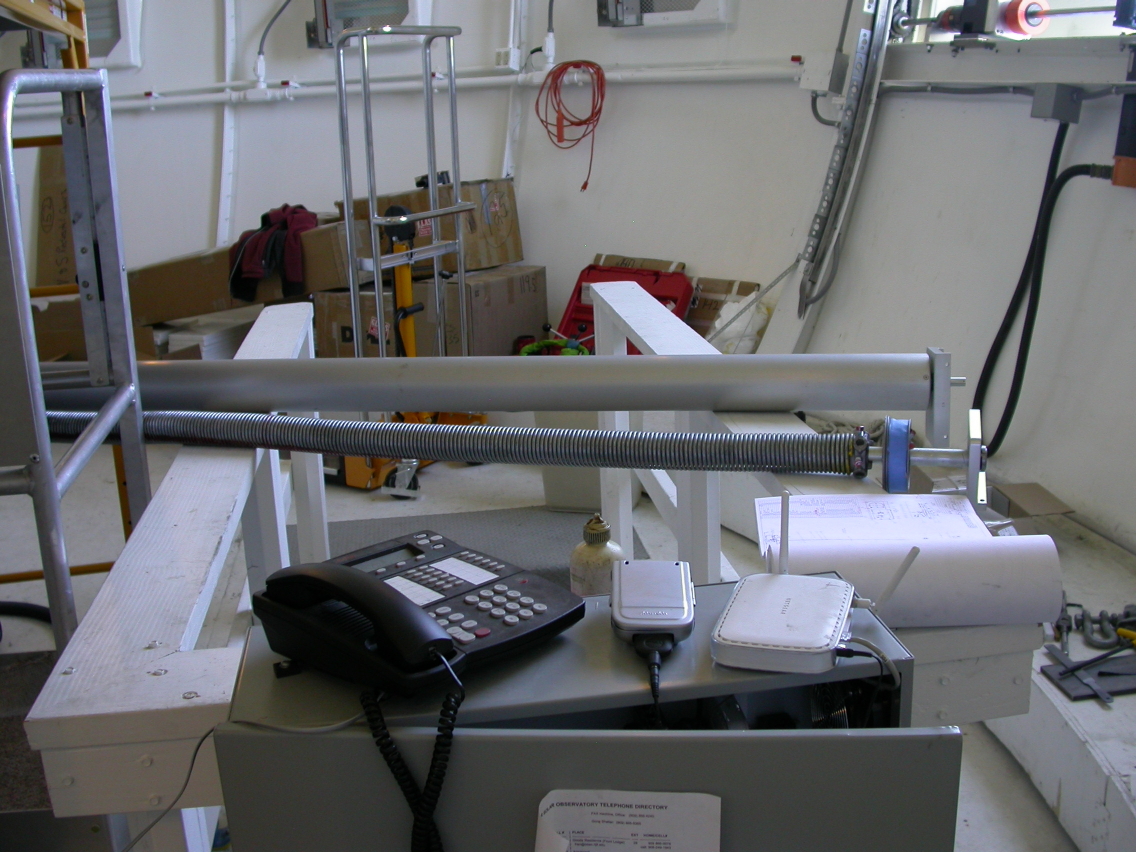 |
|
After the mirror is set down on the
yellow posts the mirror cell is hoisted
up around the mirror. The actuator rods
must go through the holes in the back
of the mirror cell. The weight of the
mirror is transferred to the Teflon pads
in the mirror cell as the cell is lifted up.
Then the cell with
the mirror inside is placed on the other
yellow cart, the mirror cell insertion
tool. On the left we see the actuator rods inside the
mirror cell with the dummy mirror attached to them.
The dummy mirror is resting on the Teflon pads.
On the right we see that the cable wrap carriers
have been installed on the polar axis. The cables
to go on the telescope will be inside the
black plastic carriers. |
|
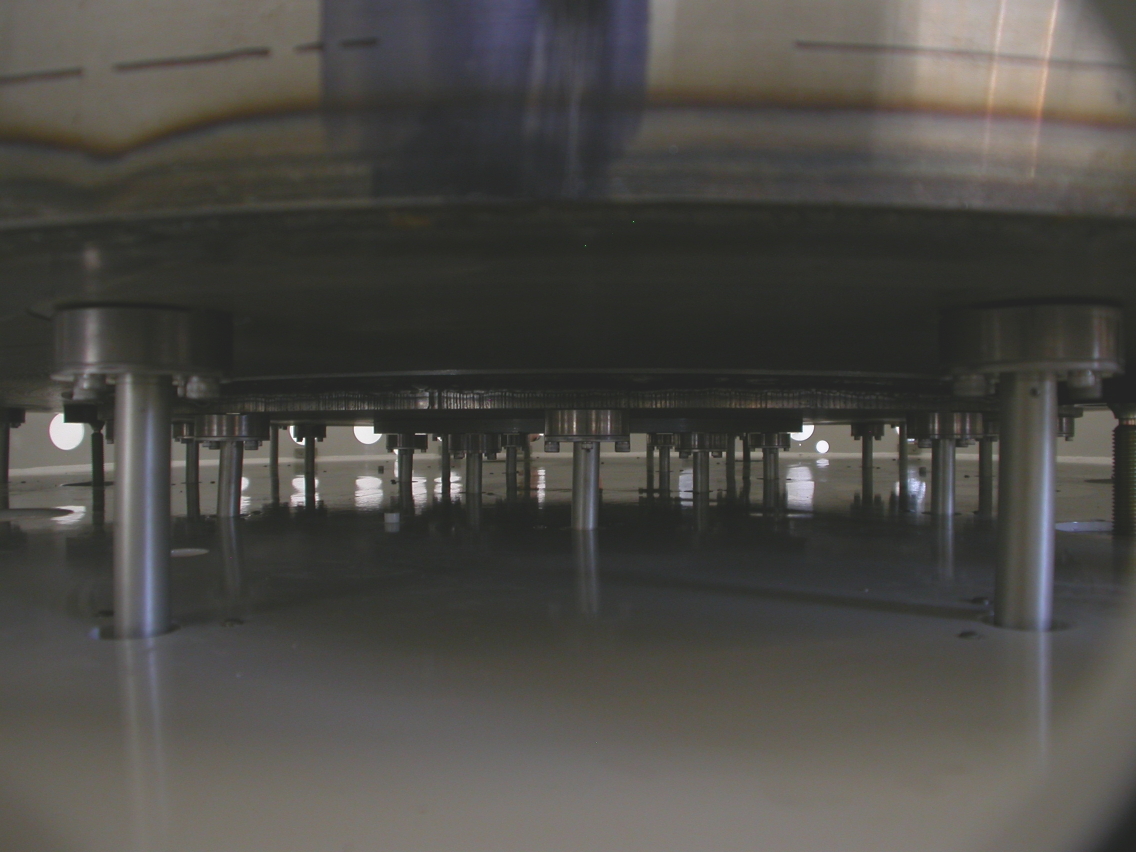 |
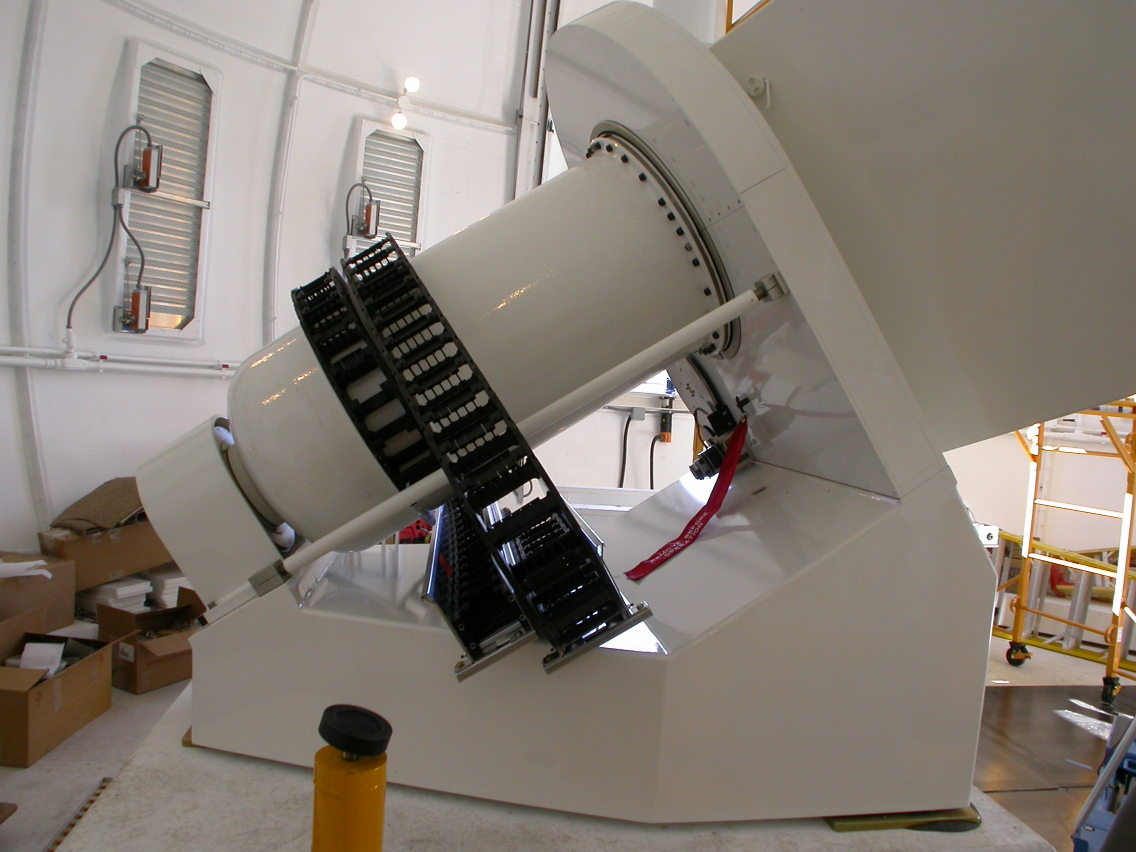 |
|
Yesterday the sunshade was installed.
The sunshade keeps sunlight from falling on the
central box structure of the mount and
changing its temperature. |
|
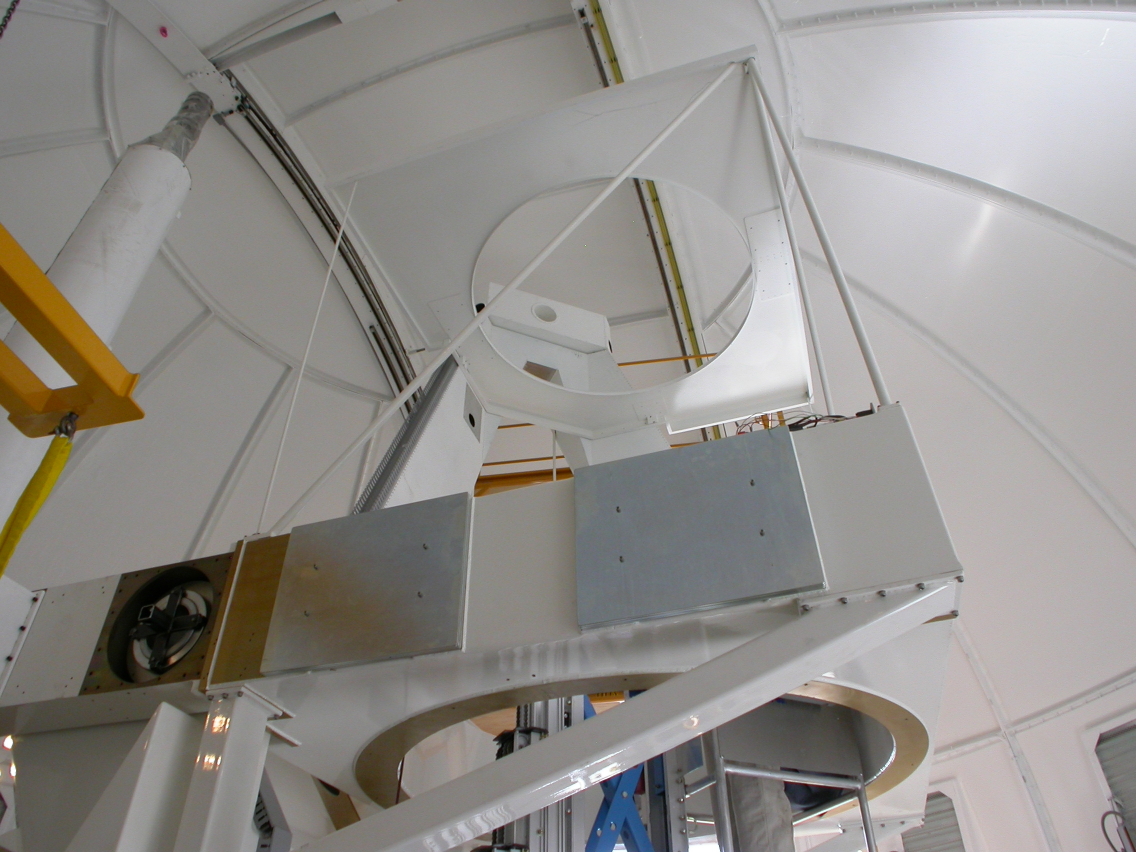 |
| 20 October 2008 |
Tonight the telescope drives should be operational
enough that we can begin polar alignment. In this process
we will use a small (about 3-inch) telescope attached to
the mount to do drift scans of bright stars. Information from those
will be used to adjust the polar axis on the pier.
The mirror cell with the dummy mirror is now on the telescope.
There is a weight installed in place of the secondary and
hexapod.
|
| 21 October 2008 |
It turns out that there were problems with the
telescope drive that prevented drift scans last night.
|
| 03 November 2008 |
The primary mirror was installed today.
We obtained first light images with a video camera
at prime focus of the star Altair tonight.
The mirror needs to be adjusted in the cell to
put the focus of the mirror in the correct location.
The first images were far off axis and as expected
showed a lot of astigmatism because of this.
|
| 05 November 2008 |
The primary mirror was installed today.
More star images were obtained.
The primary mirror is now close enough to the
correct position that we can begin mounting the
secondary and hexapod.
|
| 15 January 2009 |
Today the primary and secondary alignment were
judged good enough to begin working with the Sun.
The heat stop was installed and the closed-cycle
chiller system was connected.
|
|
 |
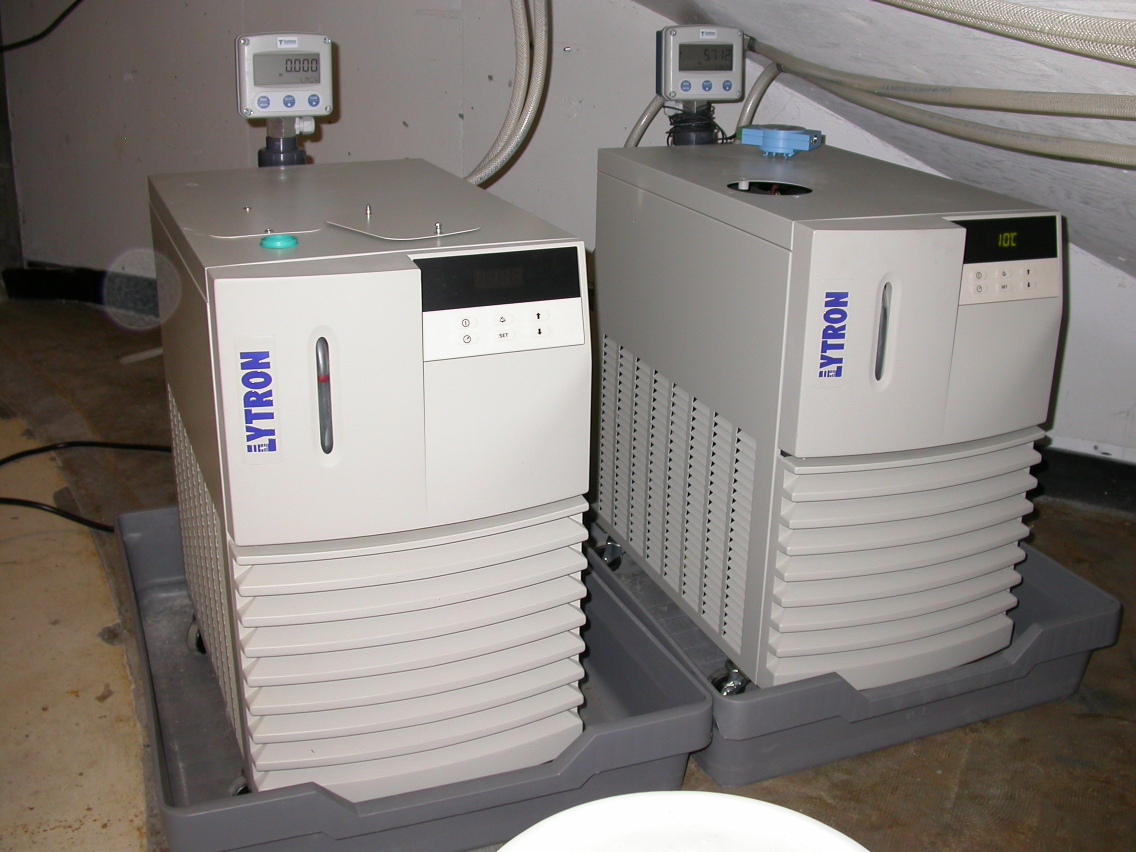 |
|
To be doubly sure nothing would be damaged
for this first attempt we installed a
full-aperture Mylar filter on the sun shield.
Normally NST will not need this.
|
|
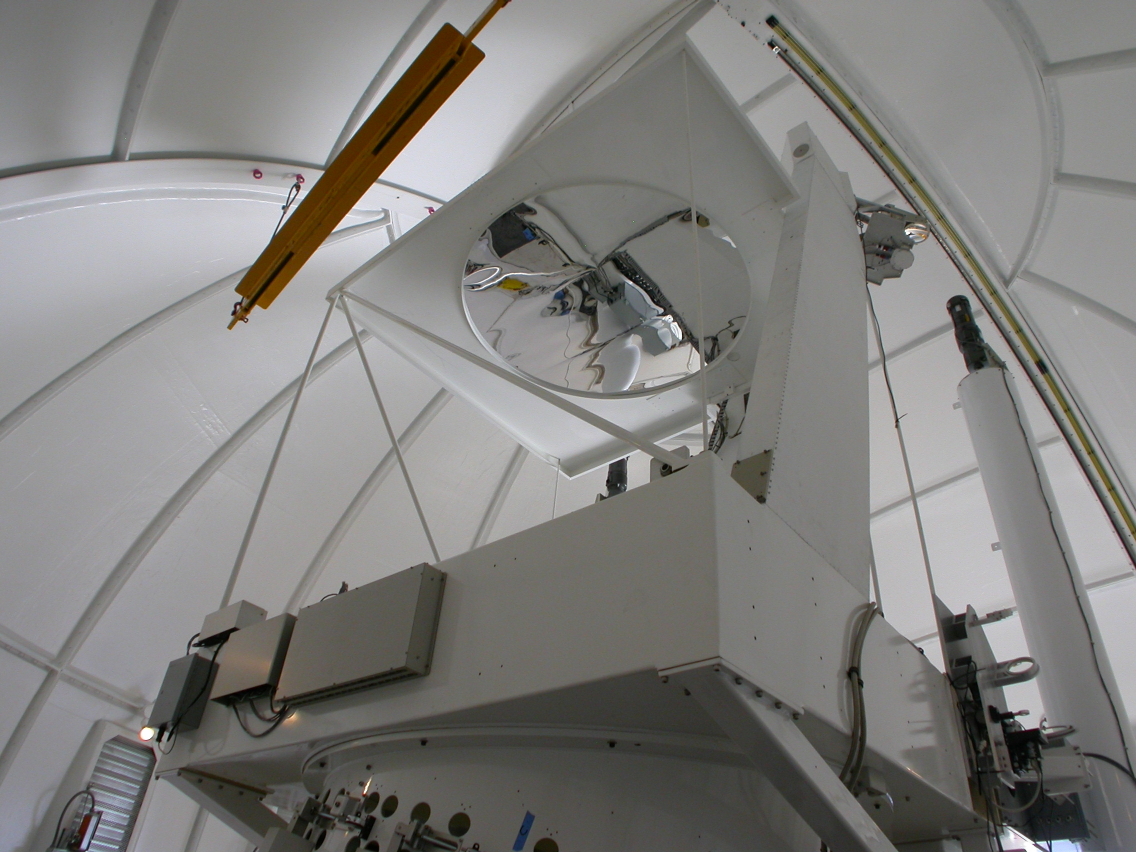 |
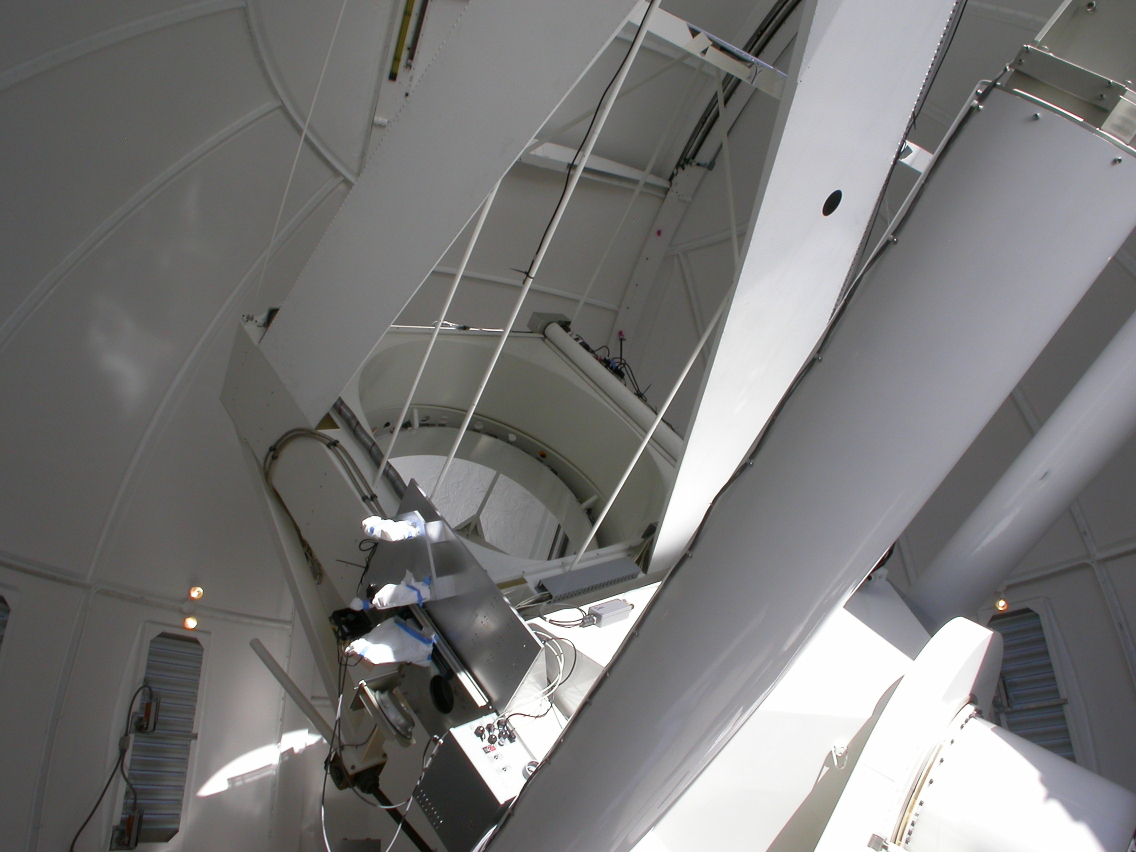 |
|
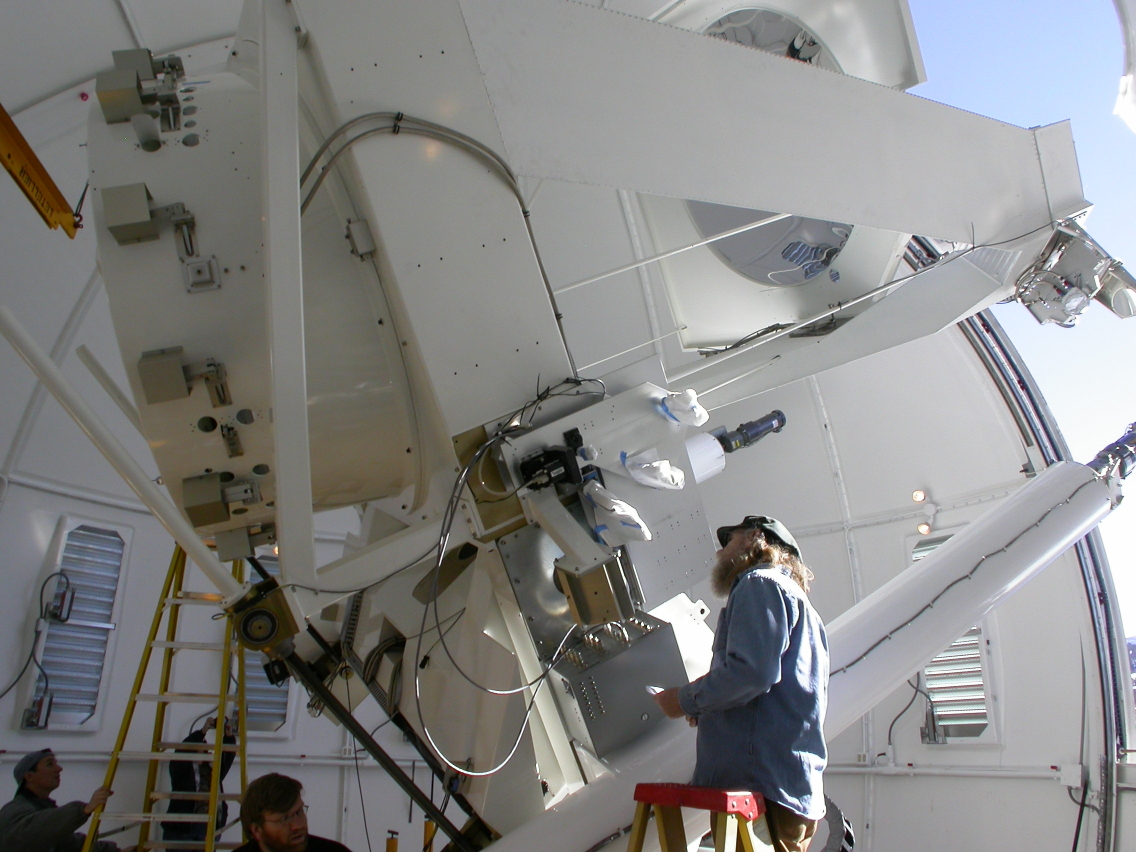 |
|
If you look closely you can see the filtered
sunlight falling on the heat stop. Next time
we may run without the Mylar filter.
|
|
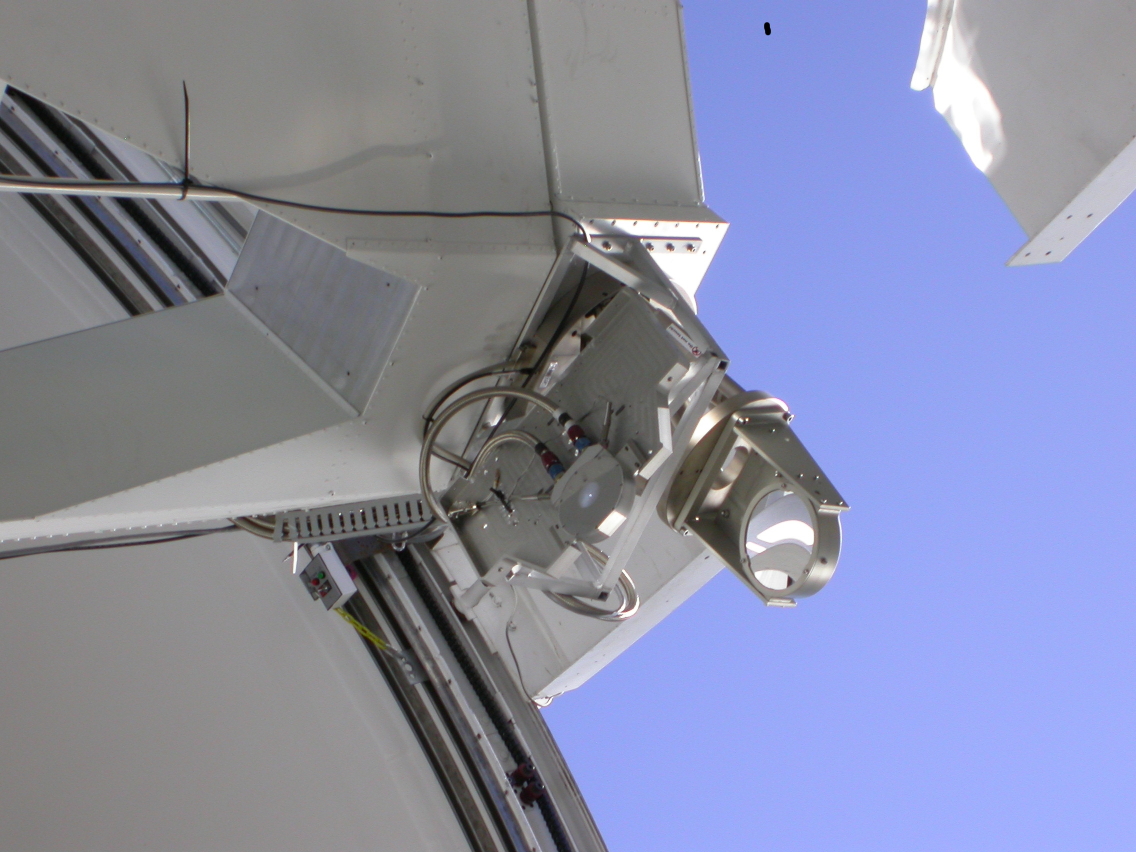 |
| 16 January 2009 |
Today we imaged the Sun without the Mylar filter.
Some test images were acquired with the PCO camera
at the Nasmyth focus.
|
|
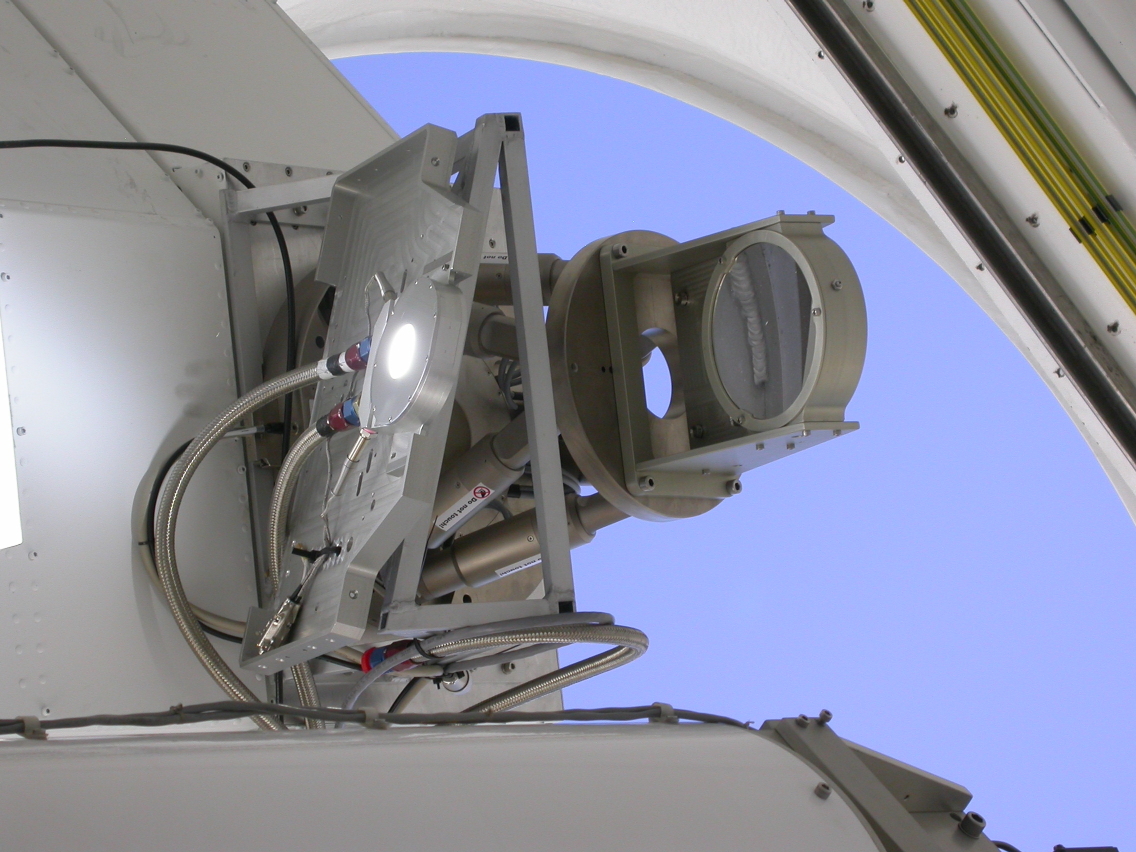 |
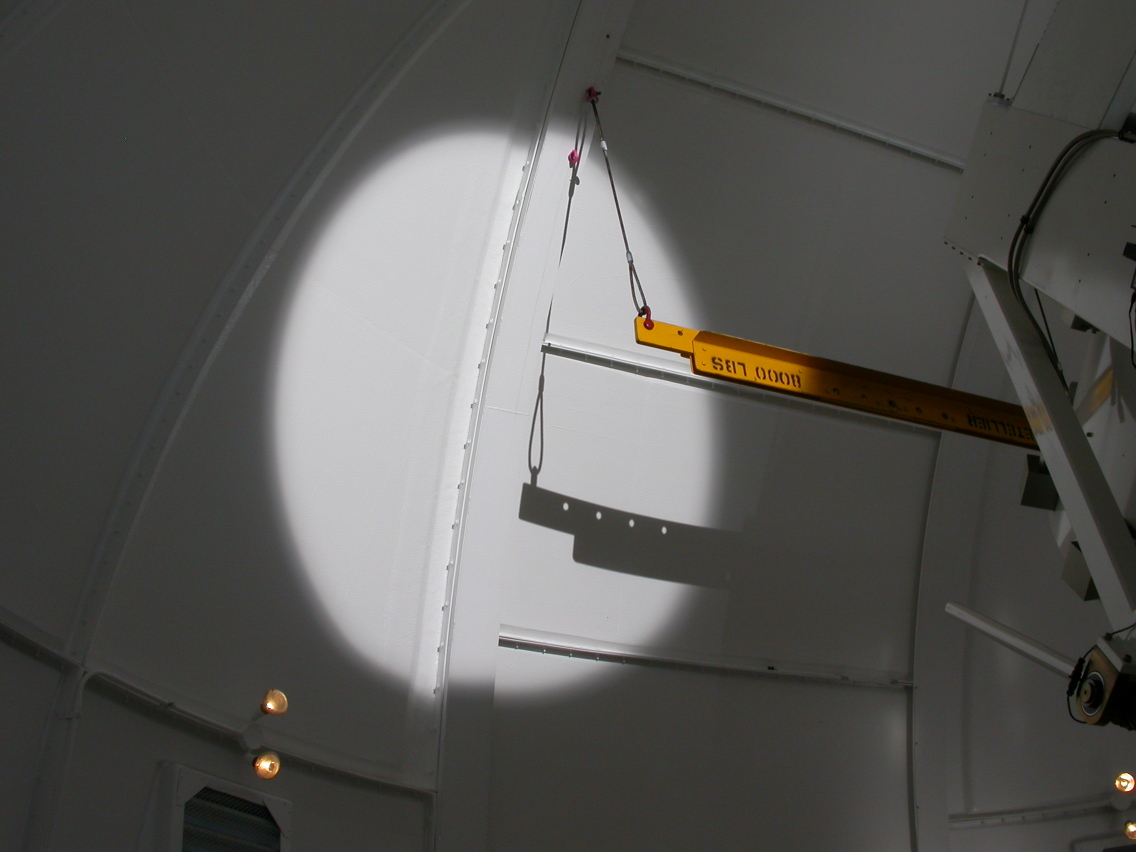 |
|
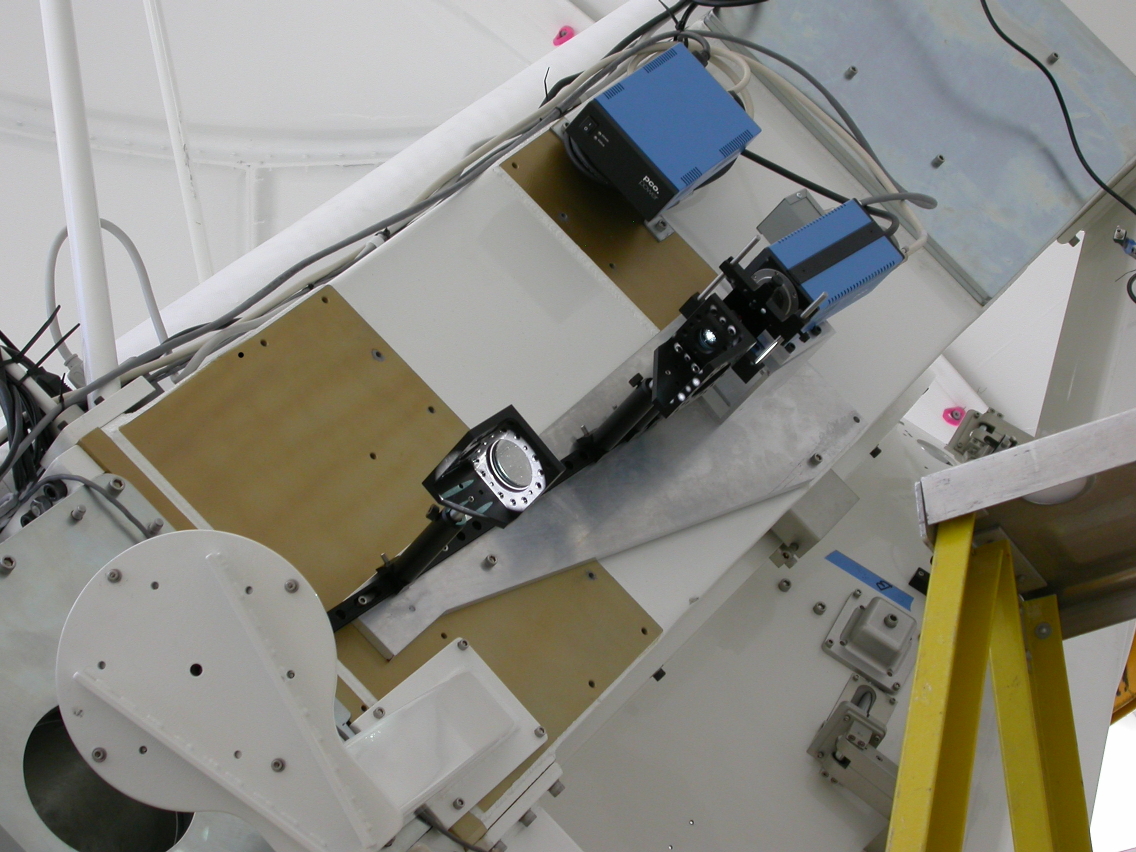 |































































































